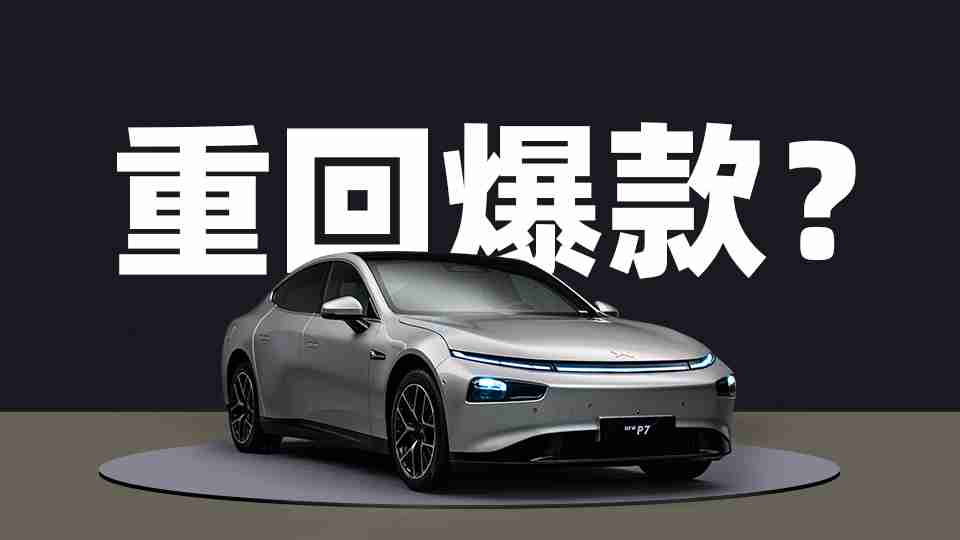When it comes to XPeng Motors, the first model that comes to mind is probably the P7. Since the various spy photos were exposed in 2019, the P7 has been the best-selling and most talked-about car among all XPeng Motors’ products for several years. Many P7 owners initially bought the car for its appearance, but after long-term use, they can’t live without its various intelligent functions.
However, technology is always advancing, and even classic models will gradually fall behind in intelligence. When competitors are bringing out more excellent configurations such as lidar, auxiliary driving chips with hundreds or even thousands of computing power, and stronger car infotainment chips, the P7 seems to be waiting silently for more and more opponents to surpass itself.
Until today, the new P7i is here! How many upgrades does it have compared to the old model? Can it return to the position of the benchmark for domestic intelligent coupe? The following will be explained by me, the owner of the 2020 model 670E P7.
Exterior and Interior
Generally speaking, the appearance of a facelifted model will not be greatly changed, and the main changes will still be in the interior part. The P7i is no exception, but the exterior is still worth mentioning.
Exterior: Looks the same at first glance, but with changes upon closer inspection
The appearance of the P7 is a classic of the first generation, and it is also a major factor that many people bought the P7. The P7i did not make major changes to its exterior, and most people cannot even tell if the car is a P7i or an old P7 at first glance. However, upon closer inspection, there are still many changes in the details.
First of all, the front end of the car looks about the same, right? But in fact, the P7i added a lidar. Can you see where it is? If you can’t find it within five seconds, you have to give XPeng’s designers a thumbs up for perfectly integrating the lidar into the front-end design.Close up, it can be seen that P7i has placed the lidar inside the headlight, but unlike G9’s placement of the headlight and lidar vertically, P7i has changed it to a horizontal arrangement. It is precisely because of this that compared to the old P7, the new headlight assembly has been pulled inward slightly.
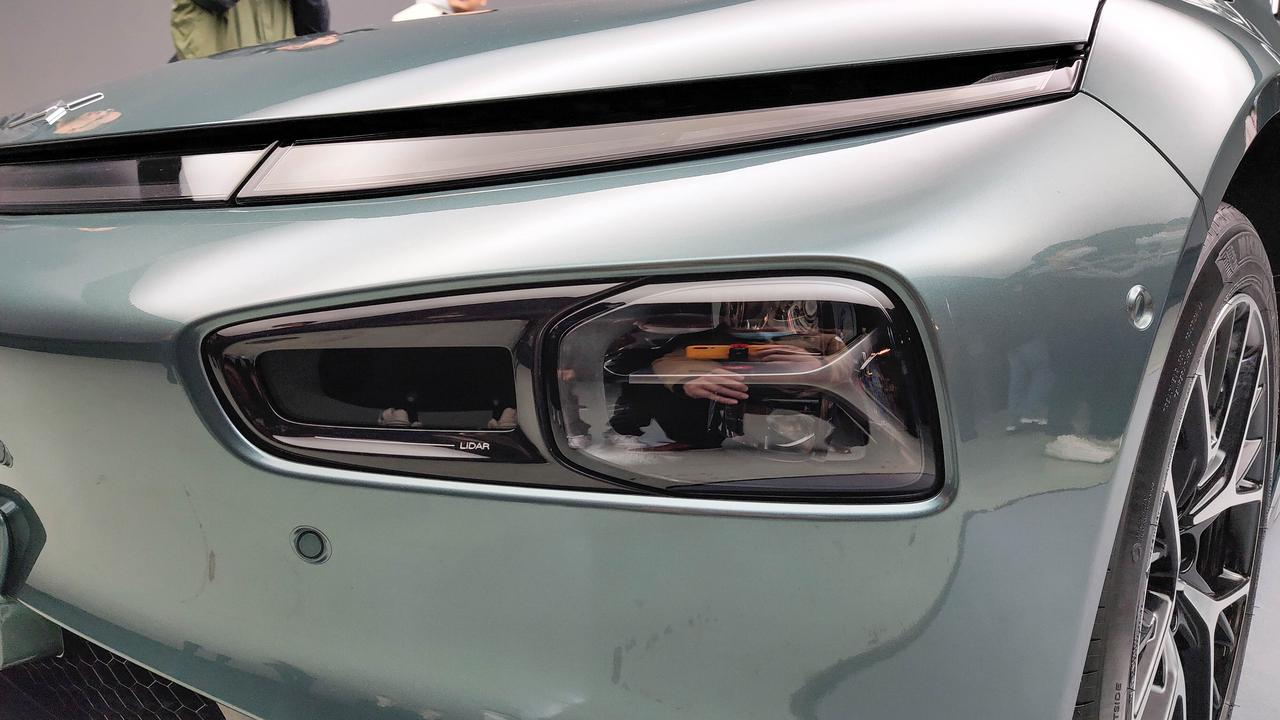
At the same time, the original high and low beam lights have also changed from the original horizontal arrangement to a more compact vertical arrangement. And in response to the problem of the high beam not being bright enough, which has been criticized by old car owners, the official said that it has also been improved on the P7i.
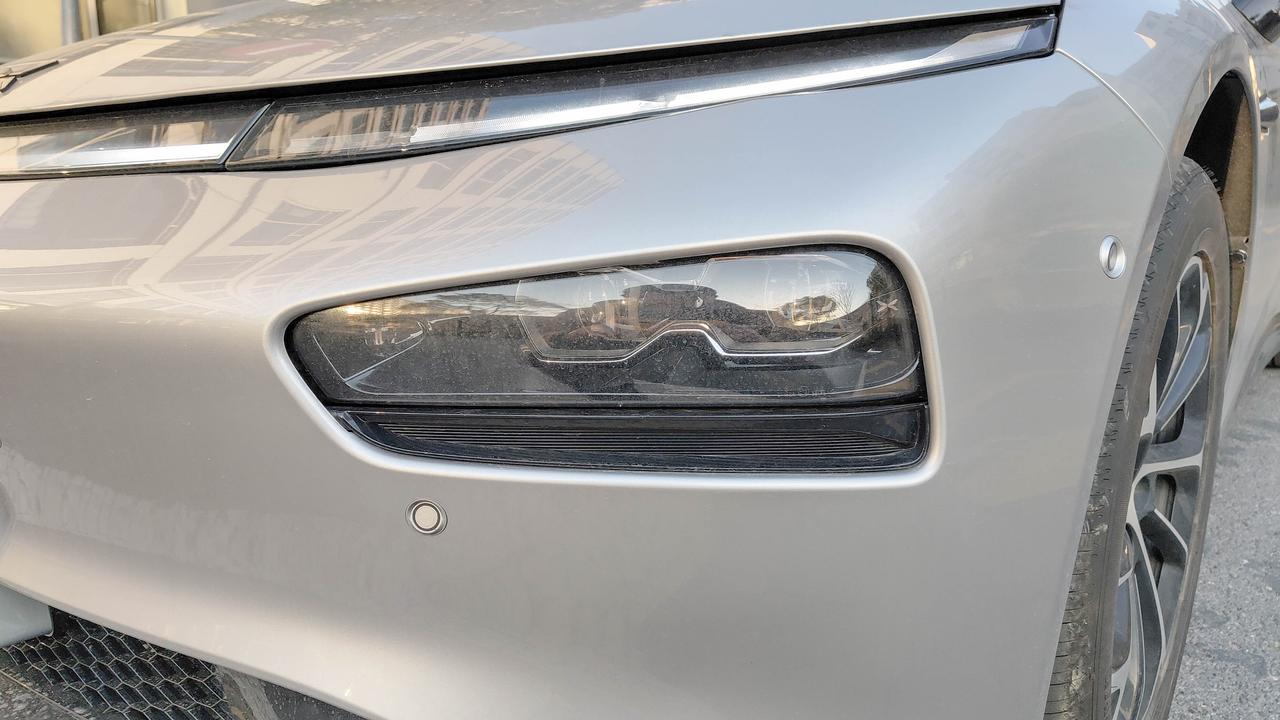
Another change in assisted driving is that the forward-looking perception camera has changed from the original three-camera solution to a dual-camera solution with a wide angle and a telephoto camera. Despite the reduction of one camera, these two cameras have been upgraded to 8 million pixels. Yes, P7i also comes with XPILOT 4.0’s assisted driving hardware, which is completely identical to G9’s Max version. The hardware capabilities of assisted driving have finally caught up with the current first-tier.
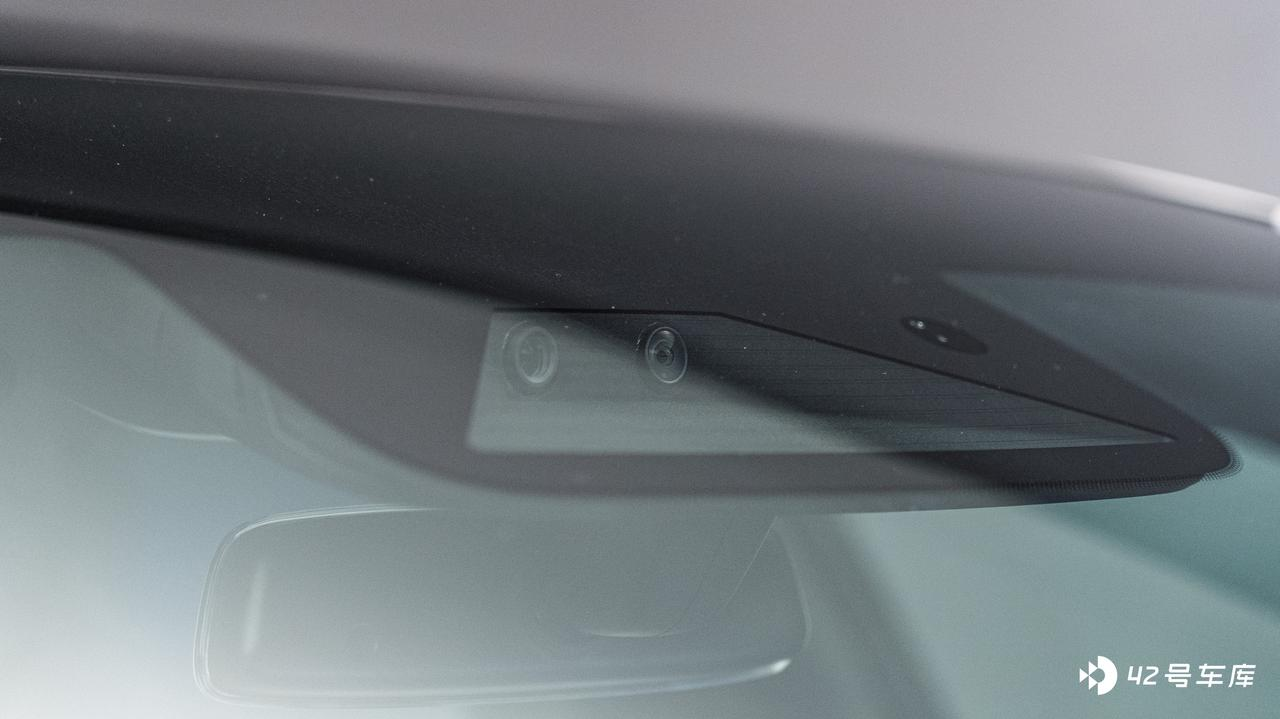

Opening the front hood, as an old car owner, I immediately noticed that something was wrong. Where is the front trunk? We speculate that the reason for cancelling the front trunk on the P7i may be due to the new fully equipped heat pump air conditioning system, which has compressed the space inside the front of the car and there is not enough space to place a front trunk. Although I rarely used the front trunk in the two years I owned the car, it is still a bit regretful that it has been cancelled.
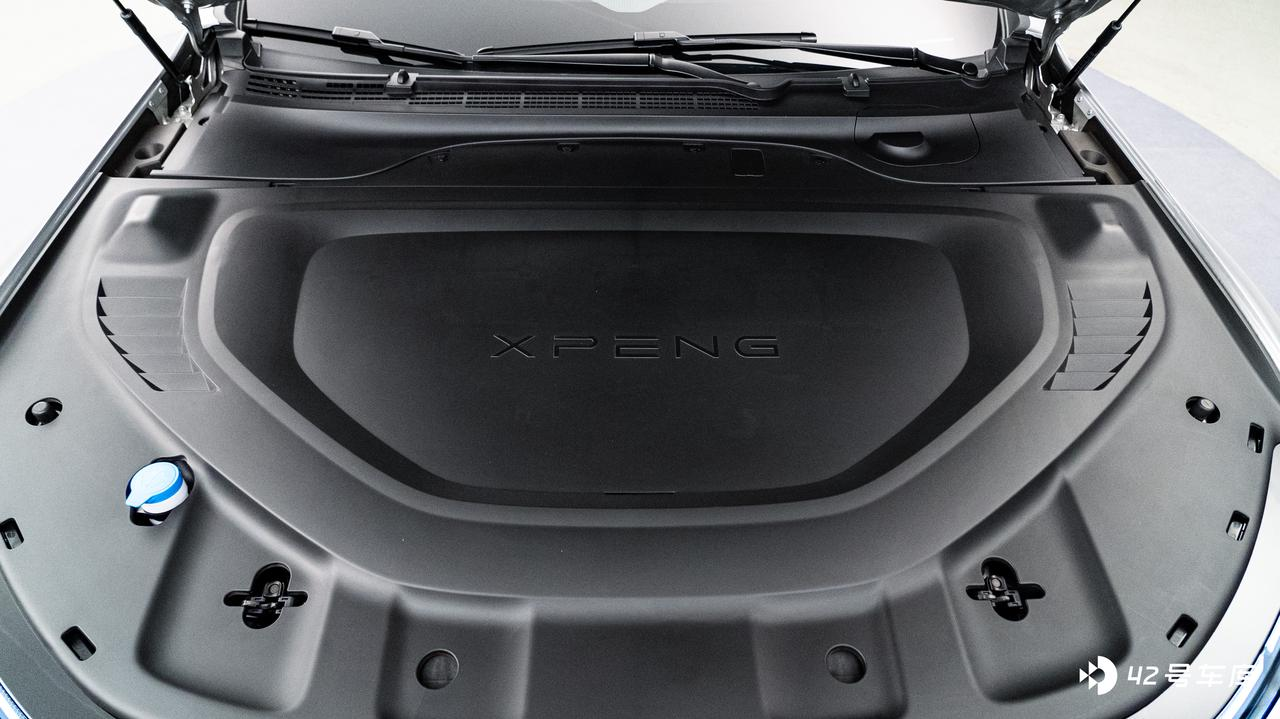

The difference between the new and old model lies in the details. Firstly, the new wheel hub is the most obvious difference, providing a clearer view of the brake discs and brake pads inside compared to the old 19-inch wheels, resulting in better sporting performance.
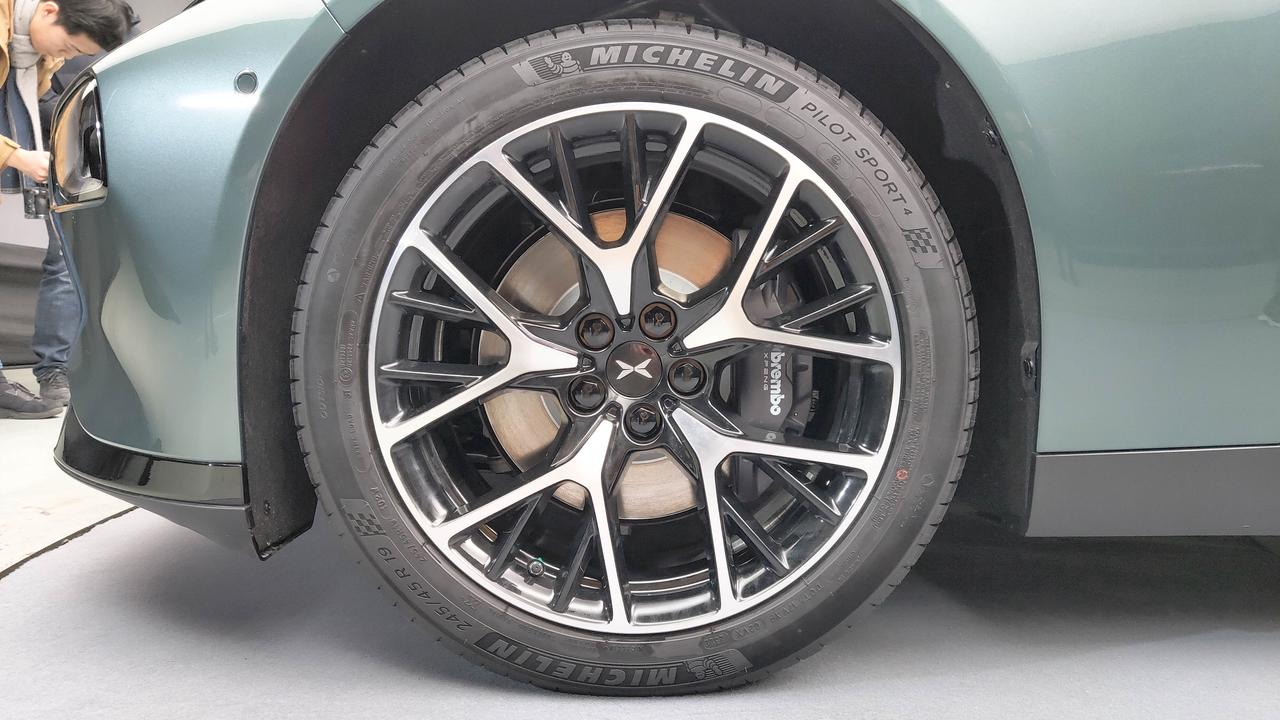
The tire specification remains the same as the old one, with Michelin PS4 245/45 R19 tires. In addition, the new model still has a version with 18-inch wheels. The caliper specification is also the same as the old model, with four-piston Brembo calipers on the front wheels and single-piston calipers on the rear wheels, with brake discs also from Brembo.
Another significant change is that the P7i rear series is standard with privacy glass, avoiding the need to visit a film shop after purchasing the car to have it installed.

The other small change is the position of the side-view camera, which is now a two-tone design of silver and black, and I personally find it even better-looking than the silver trim of the G9.
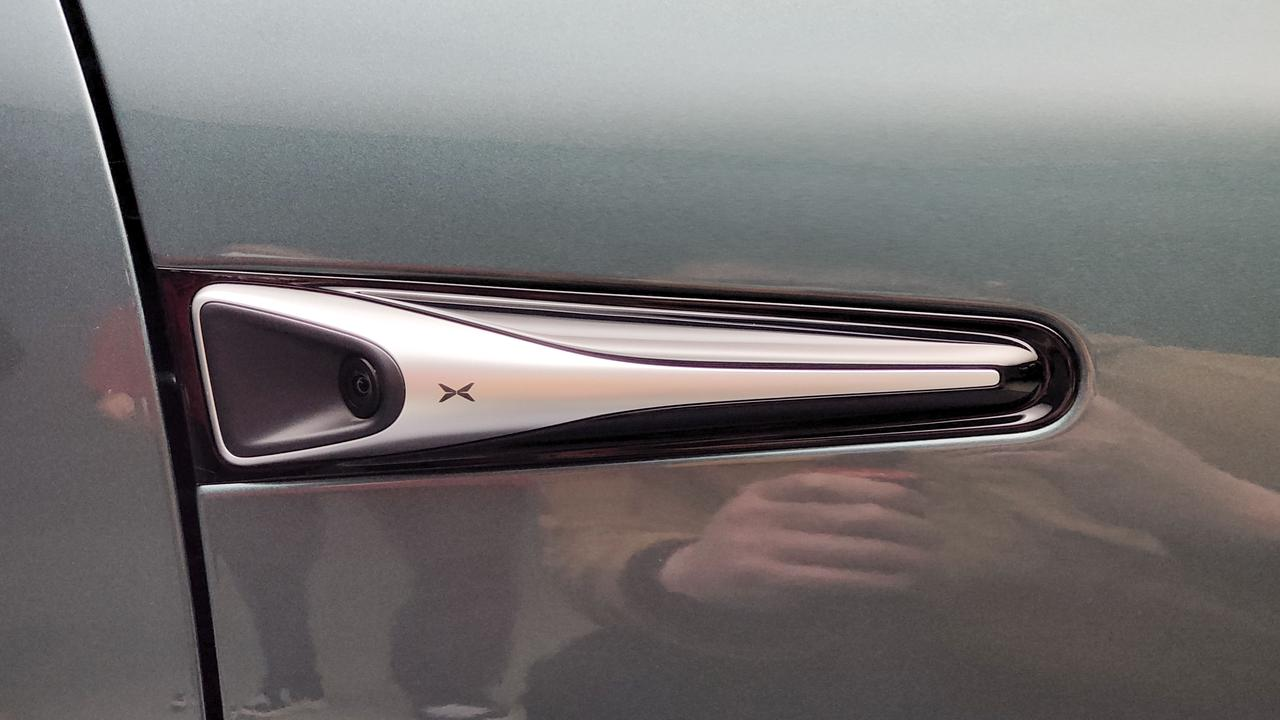
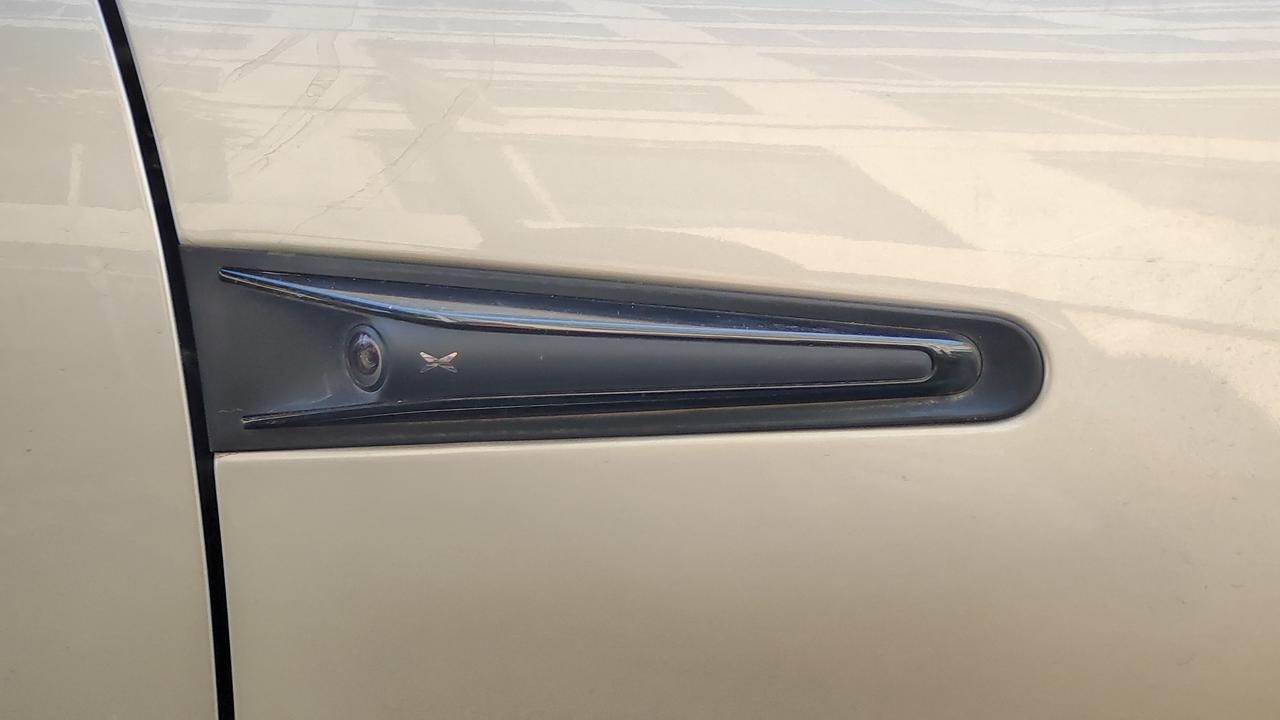
The final upgrade on the side is that the P7i series is fully equipped with electric suction door. Due to the heavy weight of the P7’s car door, it requires greater force to close the door, often resulting in the problem of over-closing the door. The addition of an electric suction door effectively solves this problem. In practice, the feeling is basically the same as the electric suction door on the G9.
The differences between the new and old models of P7i are not very obvious at first, similar to the front part. Here are three changes that can be noticed after a closer look:
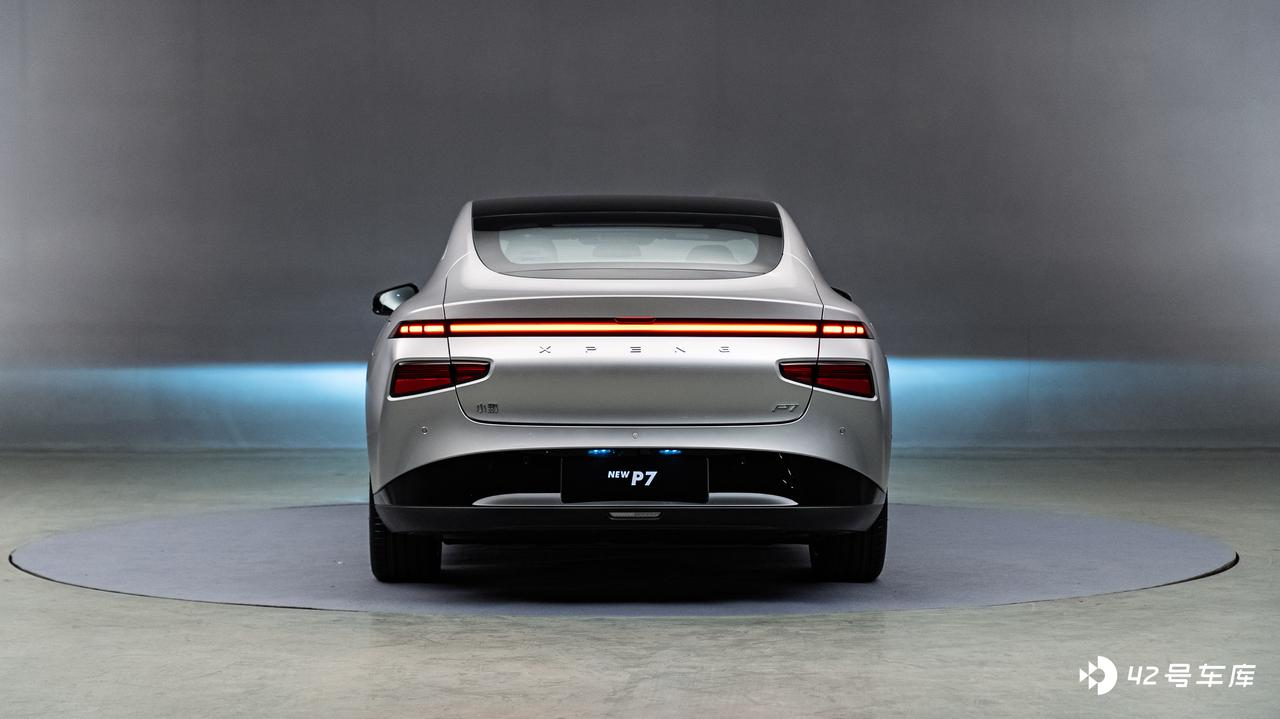
Firstly, the low-position brake light and turn signal are larger than before, which is designed to match the larger headlight module of the front part.
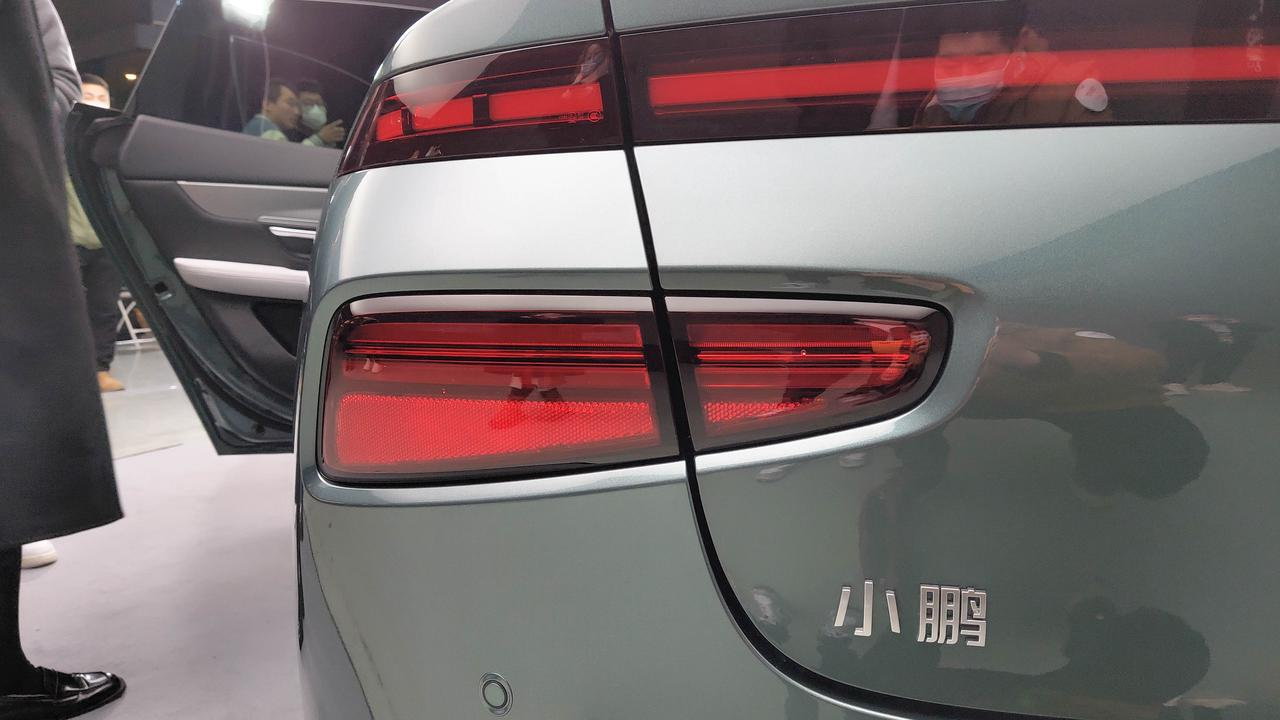
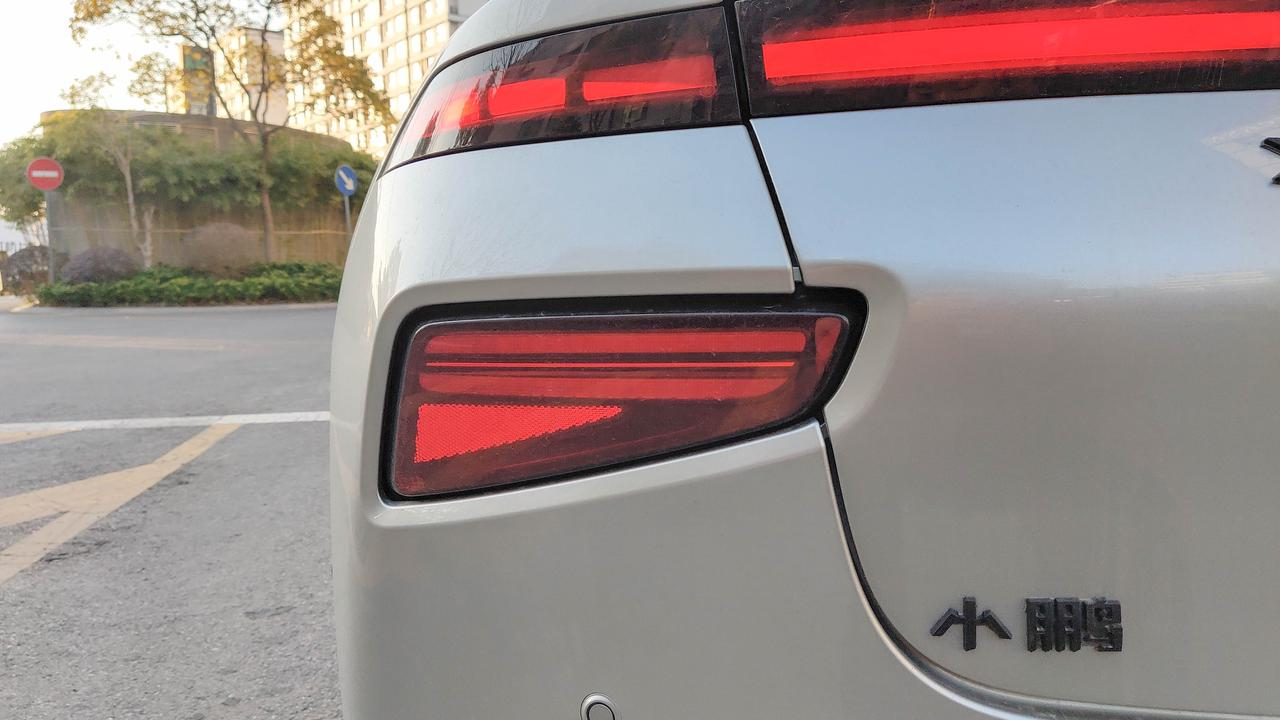
The second change is also significant: P7i now has an external switch for the trunk and comes with electric and induction tailgates as standard, which means no more retrofitting is needed as in the old version. However, this button is still placed in the same position as P5, under the trunk lid, making it inconvenient for most people to reach without bending down.
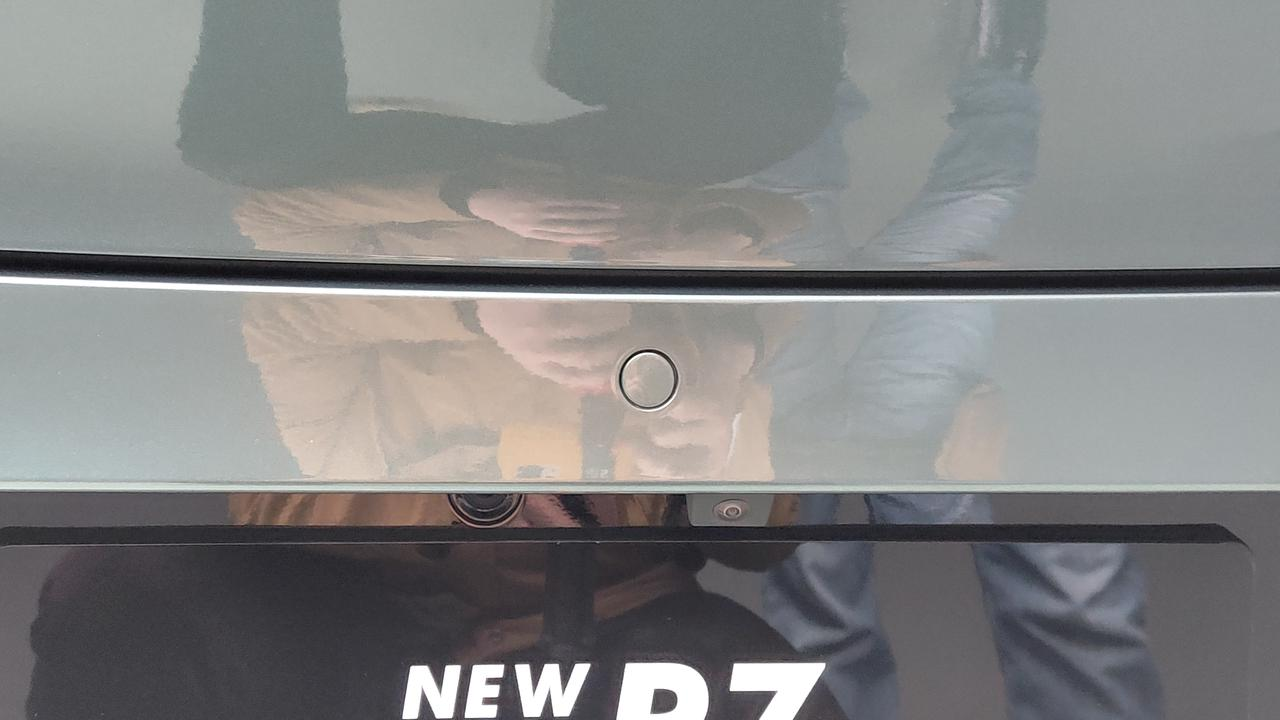
Correspondingly, a closing button is added inside the trunk lid, which is placed on the left side. When asked about the absence of the trunk button in the old P7 model, the official response was that due to the wiring layout, engineers have come up with several solutions, but none of them could add the button without damaging the appearance. Therefore, they had to let it go.
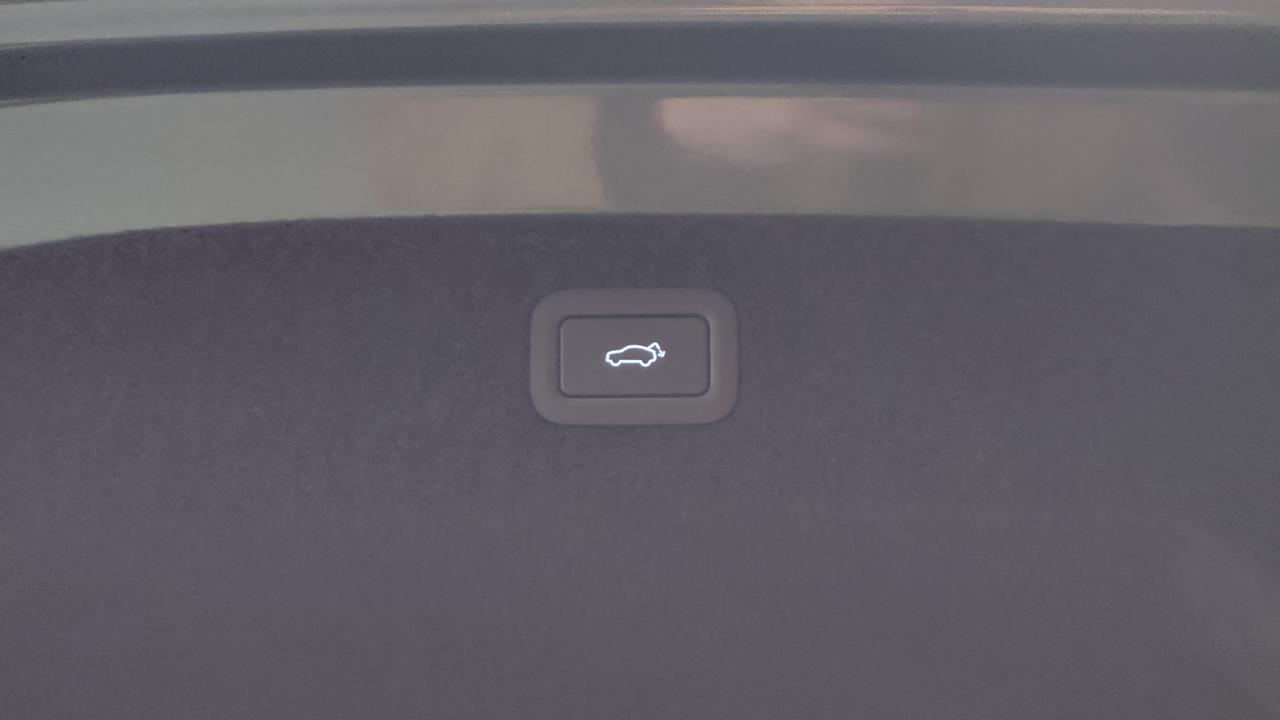
Perhaps because of the changes in the taillights and tailgate, the length of P7i has increased to 4,888mm, 8mm longer than the old version. The width, height, and wheelbase remain the same as the old model. From the side view, the extra length can be seen mainly in the more protruding middle part of the trunk lid.
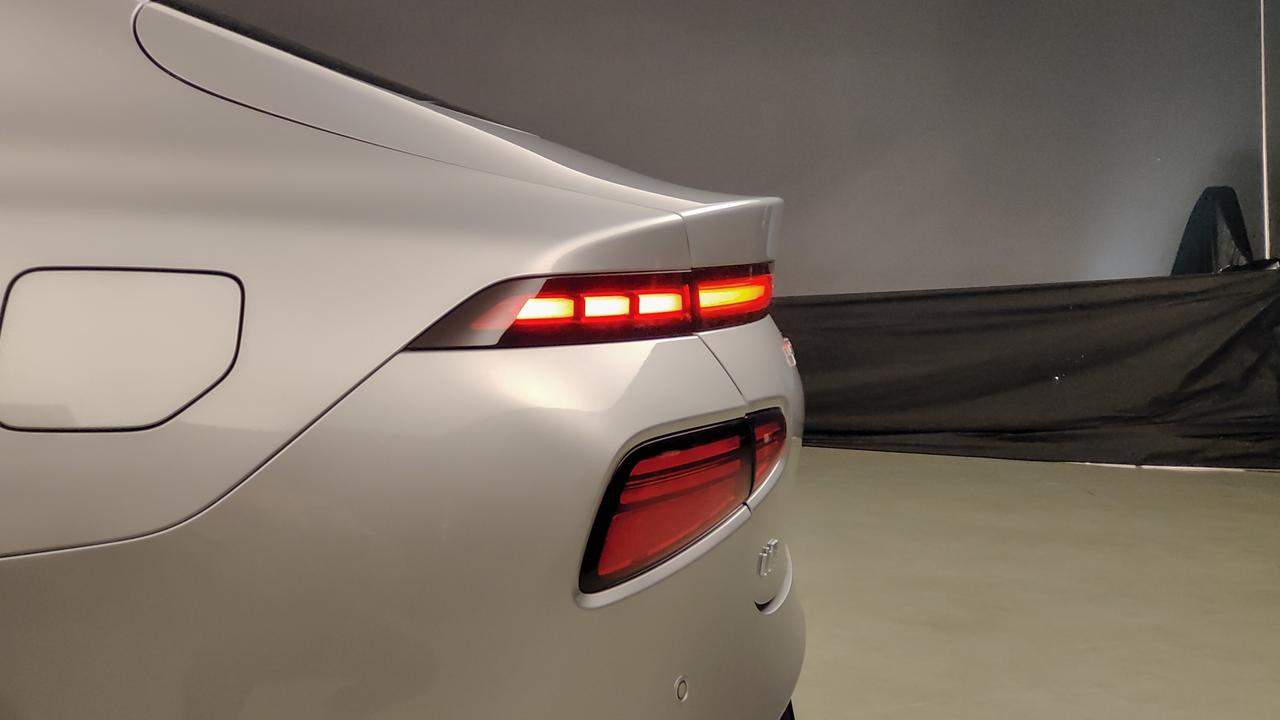 The interior of the trunk has undergone a small change with the addition of a compartment for storing emergency tools. In the previous P7 model, the emergency tools could only be piled together with other items, making them difficult to access. However, there are still no hooks or nets for placing small objects in the trunk of the P7i, which is a minor drawback.
The interior of the trunk has undergone a small change with the addition of a compartment for storing emergency tools. In the previous P7 model, the emergency tools could only be piled together with other items, making them difficult to access. However, there are still no hooks or nets for placing small objects in the trunk of the P7i, which is a minor drawback.
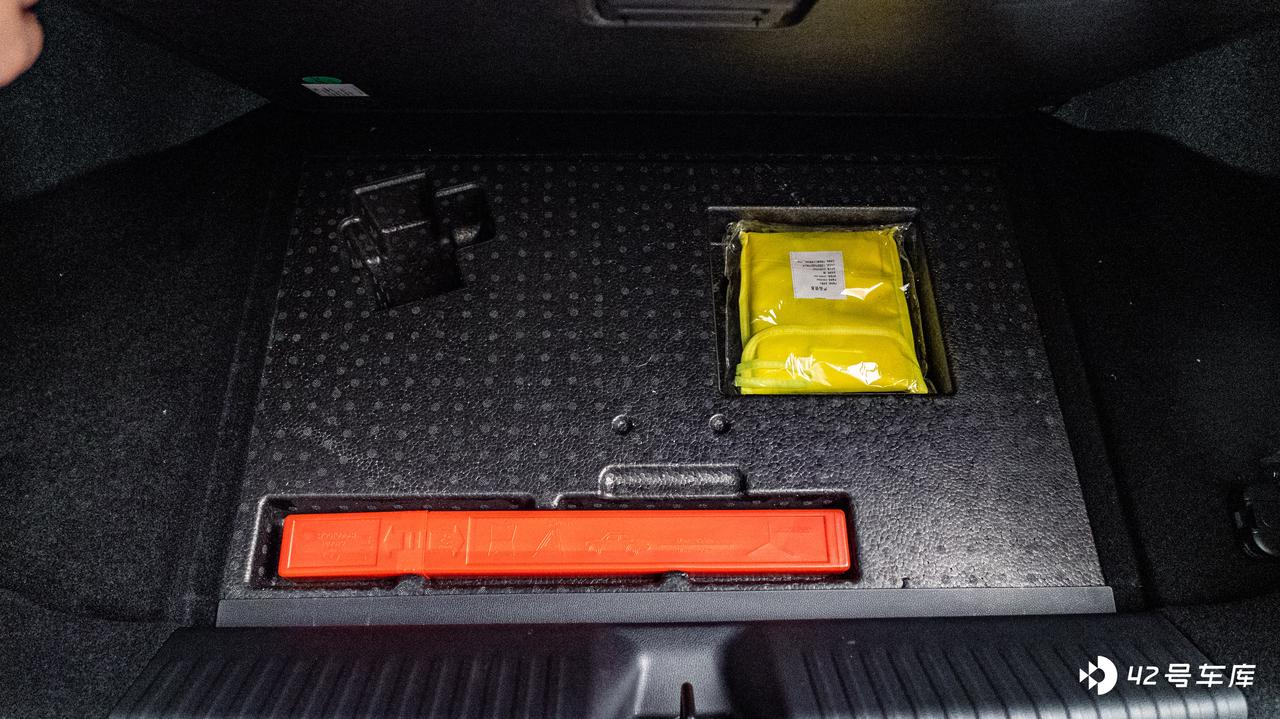
As you may have noticed, the P7i now features Interstellar Green as a new color option. Unlike the green color of the G9 commemorative edition, the Interstellar Green of the P7i is a bright paint job that makes it look younger.
That is all when it comes to exterior changes, the most significant improvements being the use of better driving assistance hardware, the addition of an electronically controlled trunk, and the inclusion of a physical trunk switch. Some of these changes are in response to changing times, while others are made based on user feedback and critiques. Compared to the exterior, there are more noticeable changes in the interior. Let’s take a closer look inside.
Interior: Improvements Made!
When talking about the P7’s interior, it is clear that it is aimed at a sleek and technological style, but lacks a luxurious feel. Additionally, there are issues with the wireless charging pad being in an inconvenient location, and the seats not being very comfortable. The P7i has made numerous changes to the interior that have addressed these issues to varying extents.
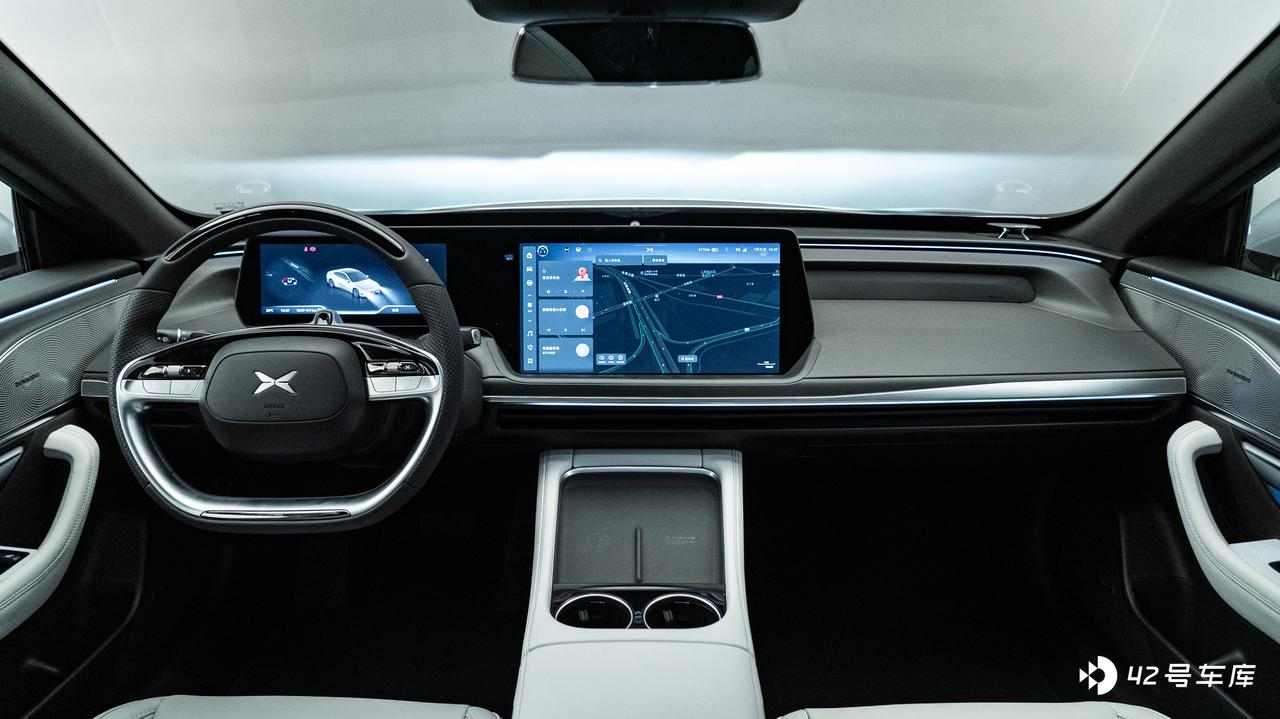
Our photoshoot of the interior was done with the new Anthracite Grey color option. As can be seen in the above picture, the biggest change to the front interior of the P7i is the redesigned central armrest area. The steering wheel features an entirely new design, and the chrome-plated strip style running through the central console of the front row has also been changed from the previous model.
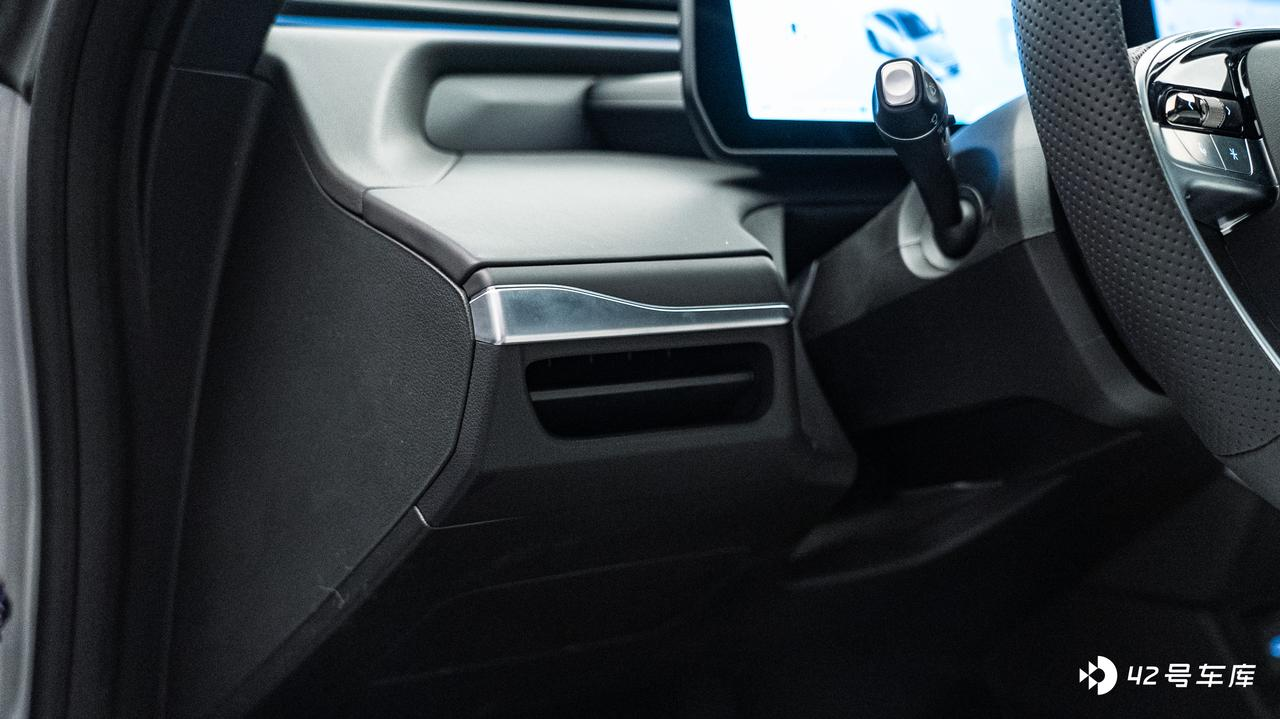

The steering wheel has been changed to the same model as that used in the G9, which is a substantial upgrade from the previous P7 model. The grip is much more comfortable, and the steering wheel buttons also feel much better. During intense driving, the driver will have more confidence compared to the previous model.
The automatic wiper control of the old version P7 can only be adjusted inside the car, which is very inconvenient when driving in rainy days. Even if voice control is used, multiple instructions need to be said consecutively to complete the adjustment.
For P7i, the rain wiper control function on the left side of the steering wheel has been improved by adding a physical switch for automatic wipers, which can be adjusted up and down by the lever. The silver part on the far left is no longer just a decoration. A button for spraying wiper water by pressing is added. However, I have a small question here, where is the function to turn on the wiper for a single time?
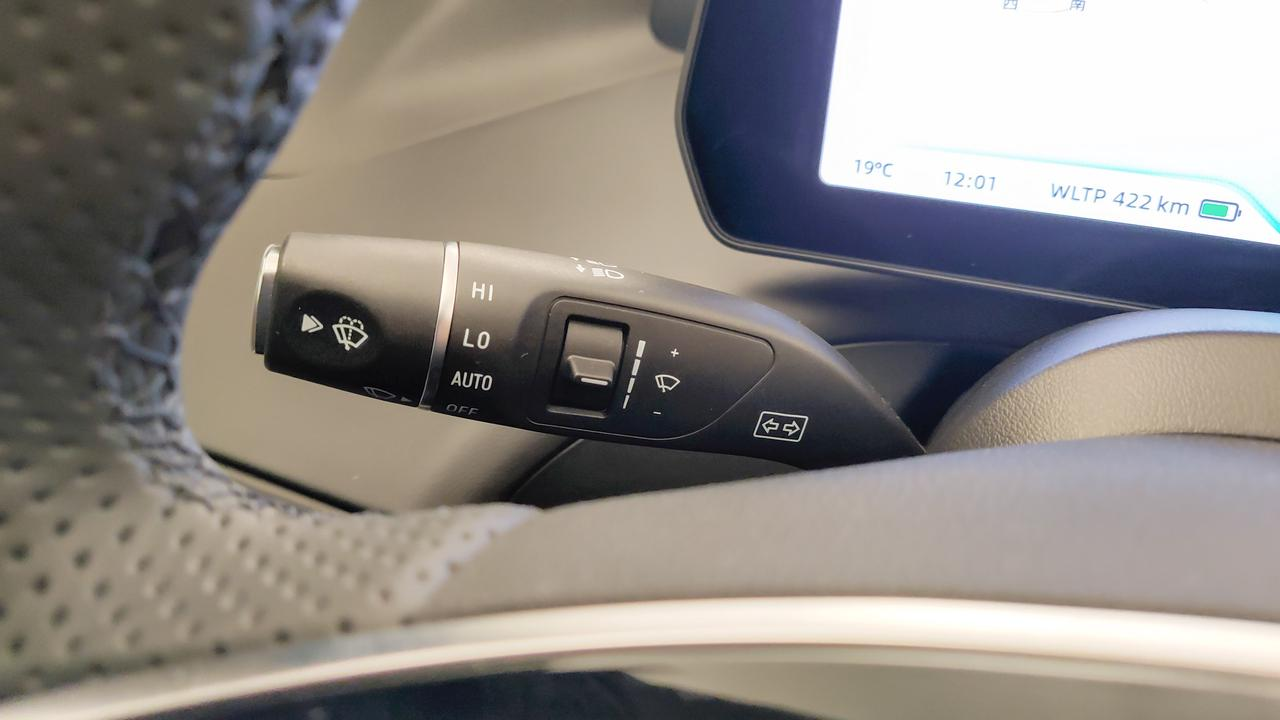
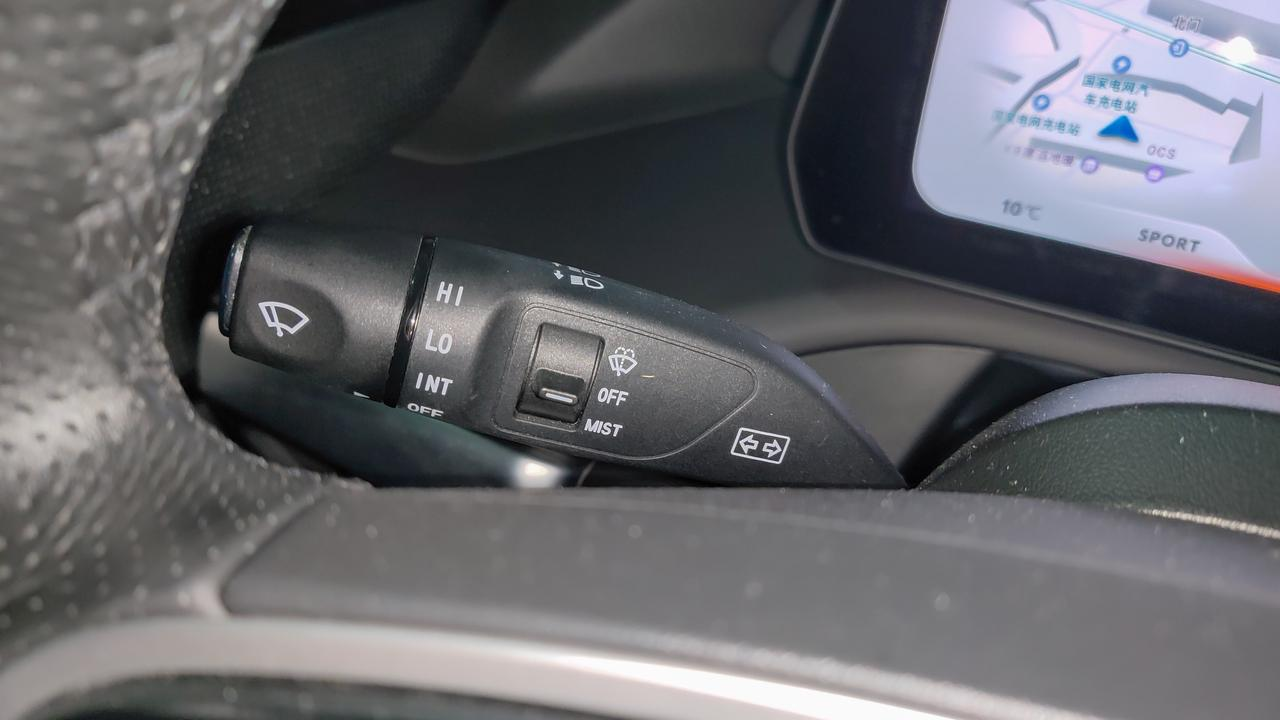
The car system is equipped with the same Xsmart OS 4.0 system as G9, and the smoothness has been significantly improved compared to the old version, thanks to the Qualcomm Snapdragon 8155 chip. In addition, P7i also carries the four-tone zone voice recognition from G9, with accurate voice recognition, fast command execution speed, and support for continuous execution of multiple commands at multiple positions.
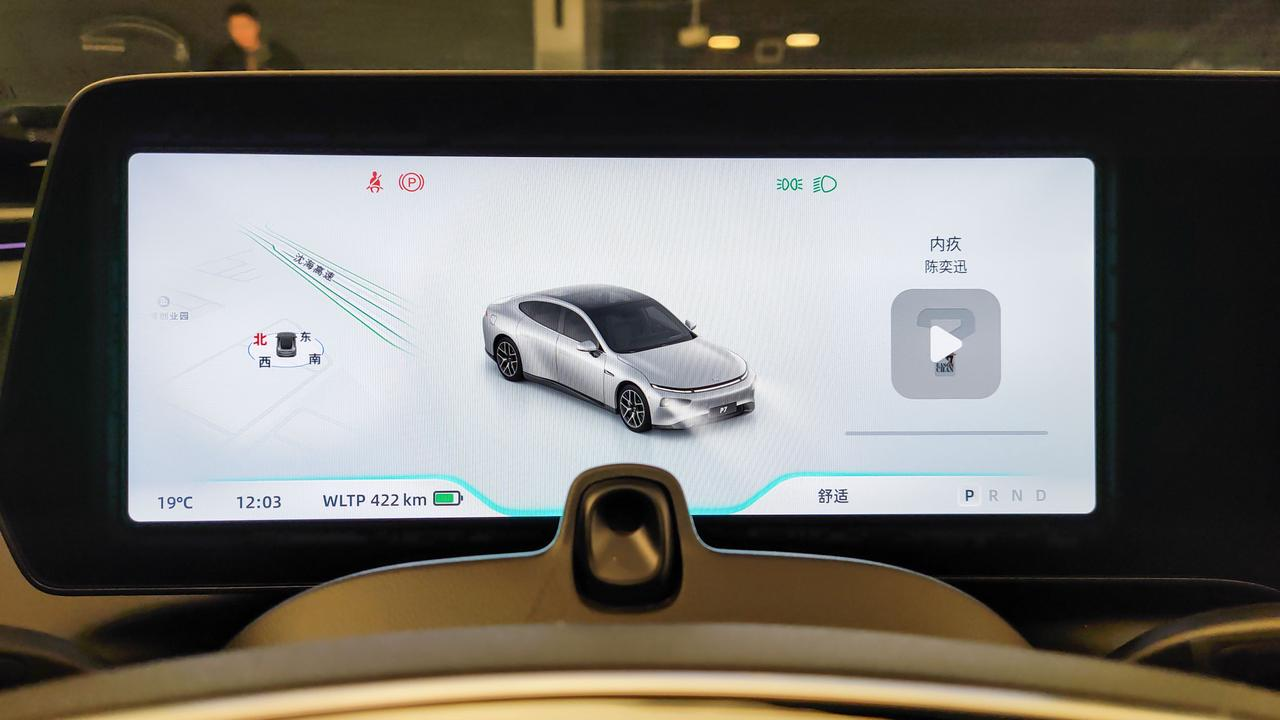
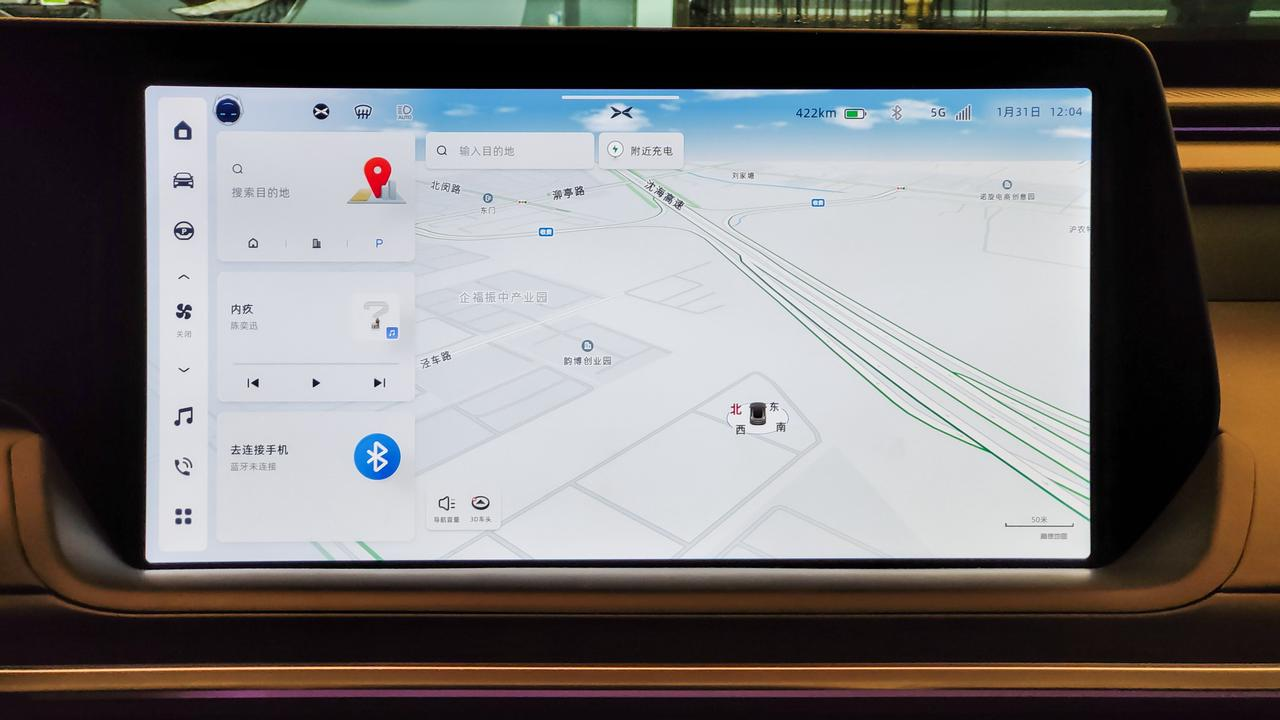
The cushioning and backrest wrapping of the front seats are stronger than those of the old version. In addition, the filling of the seats is also softer, making them more comfortable to sit in. The ventilation function of the seats in the old version P7 received bad reviews due to the lack of obvious effect after being turned on. I tried the 3 levels of ventilation on the new P7, and the ventilation effect is very strong, which is basically the same as that of G9. In the summer, there will be a noticeable difference with and without turning on the seat ventilation.
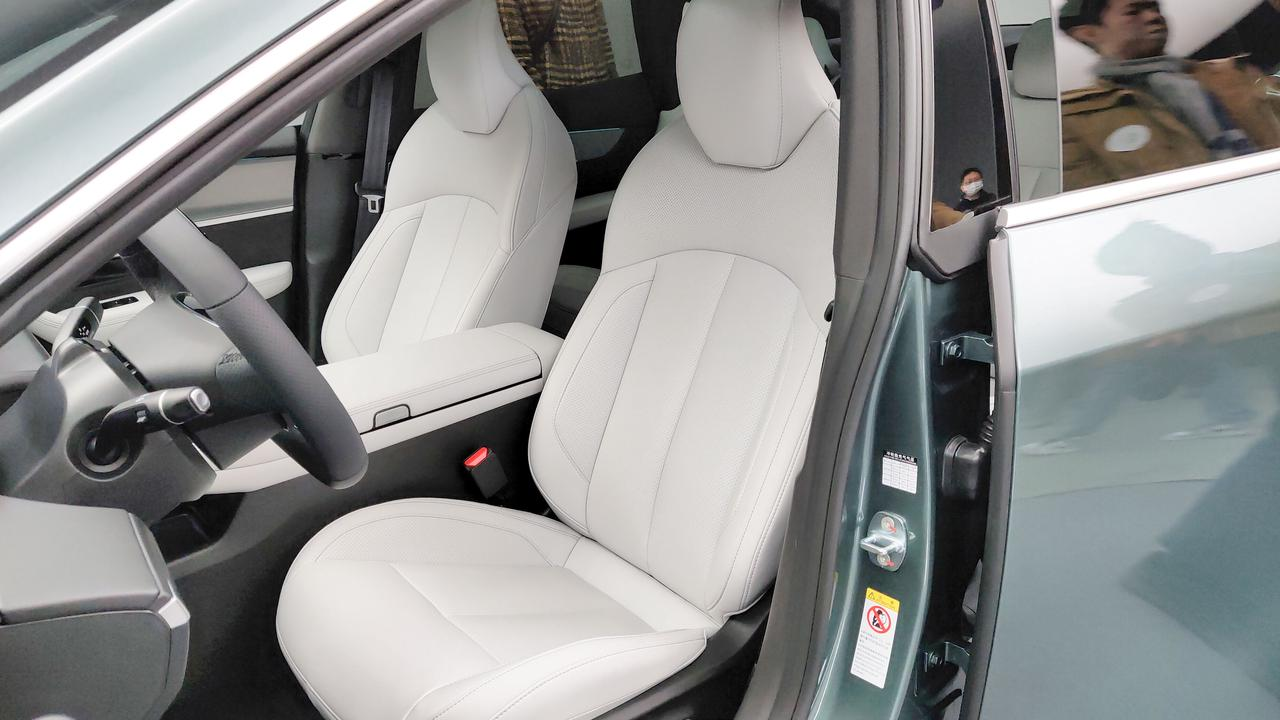 The main driver’s exclusive audio system is now fully integrated into the shoulder backrest position of the seat. If I didn’t say it, few people would know that there are two speakers hidden in this position, right?
The main driver’s exclusive audio system is now fully integrated into the shoulder backrest position of the seat. If I didn’t say it, few people would know that there are two speakers hidden in this position, right?

The design of the central area is almost identical to that of the G9, except for the wireless charging board that originally had to be “inserted for charging.” The cup holder has also been changed to a lift-up cup holder. However, unfortunately, like the G9, wireless charging can only be performed in the left area, and the right side is only a phone placement area. In addition, wireless charging does not have a cooling mechanism such as an air conditioning vent. In summer, it is easy for the phone to overheat and cannot be charged.
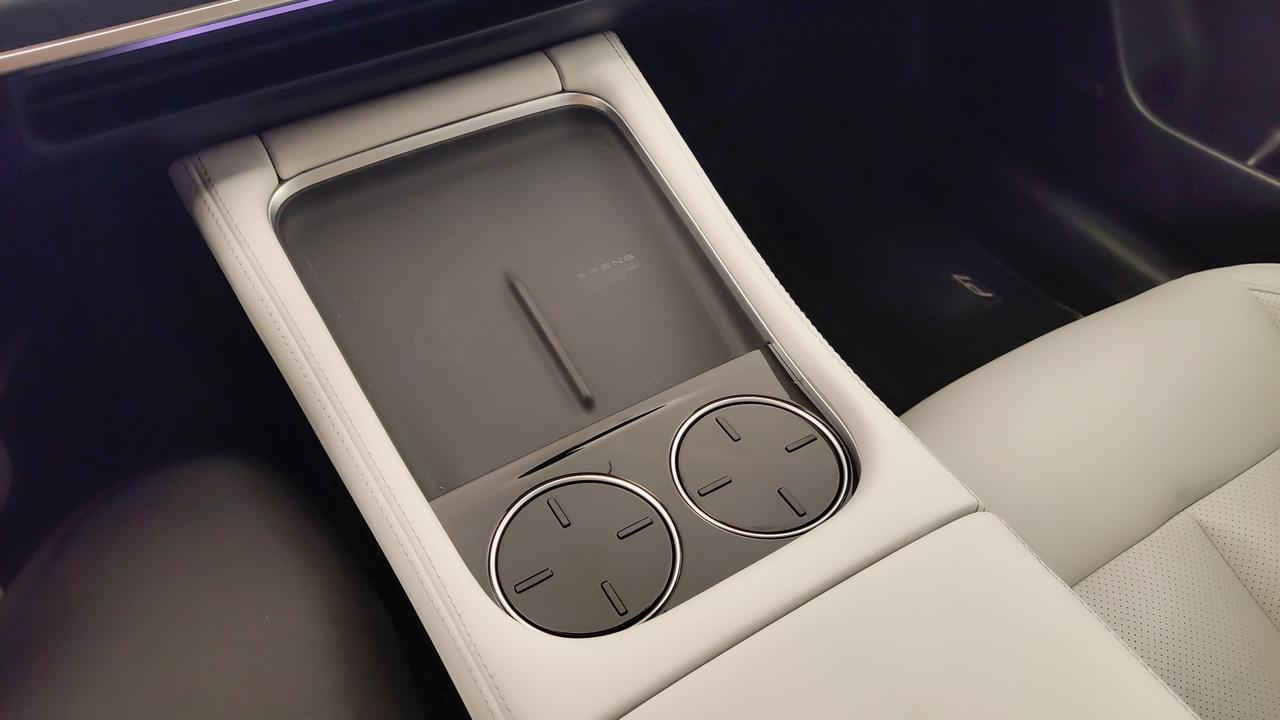
A fragrance placement area has been added to the armrest box, but at the same time, this sacrifices part of the space in the armrest box.
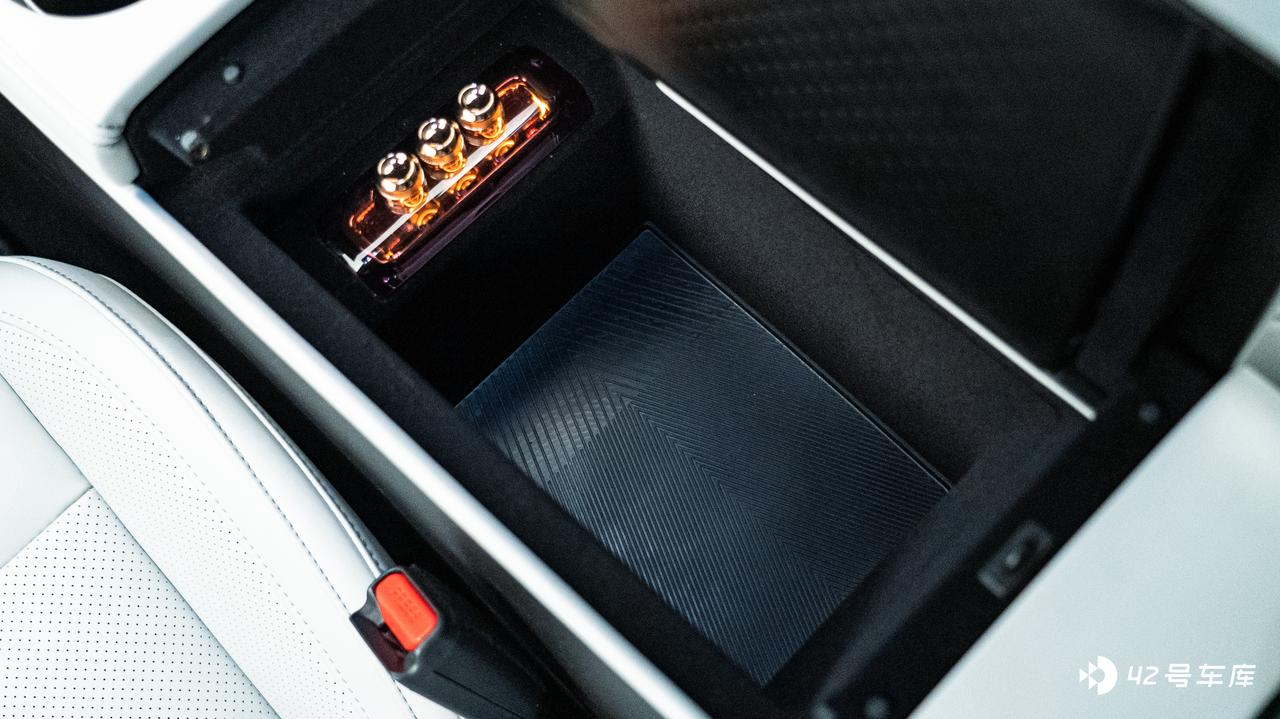
Both sides of the armrest box have buttons that can be opened to the left and right, which is also consistent with the G9.

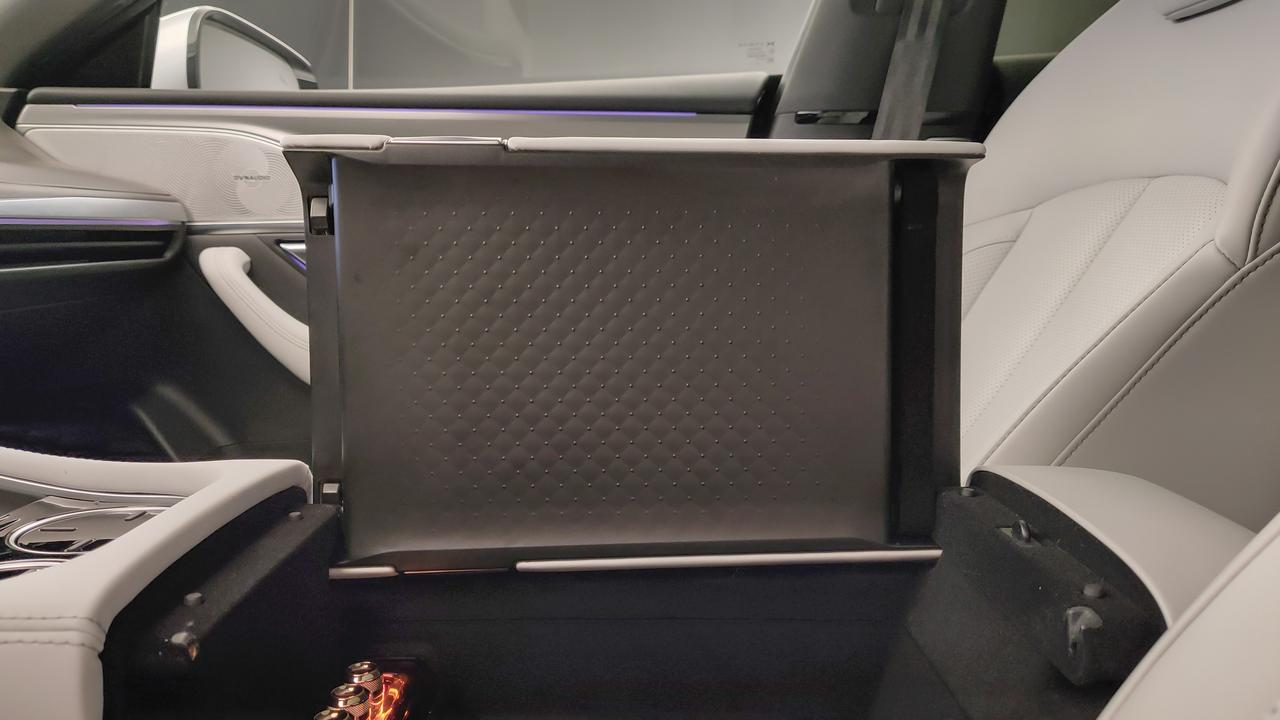
A small storage area has been dug out below the central area. Although the space is not large, it is always better to have it than not. The car’s charging ports are also placed here, and the charging ports have been upgraded from the original low-power Type A port to the highest power 60W Type C port, while the maximum power of the 12V fast charging port is still 180W.
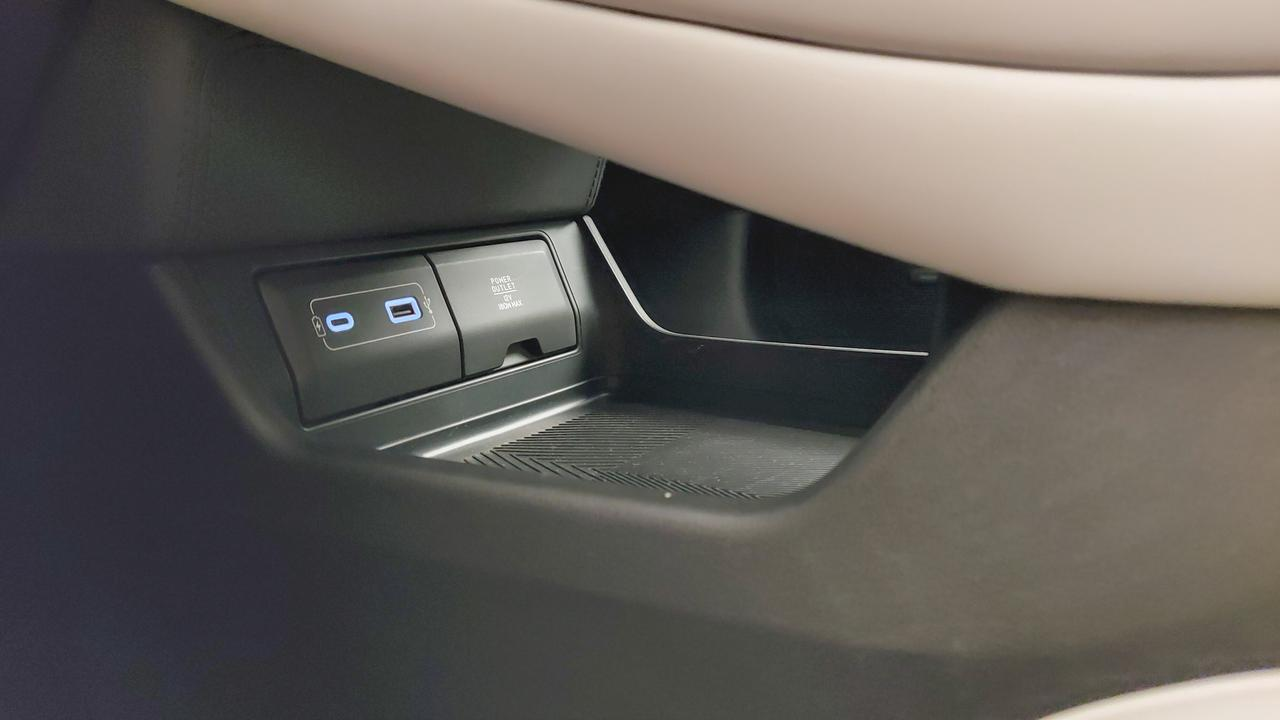
This time, the P7i’s Dynaudio audio system has been upgraded from the original 7.1.2 channel to 7.1.4 channel. According to the news on XPeng’s European official website, the maximum power of this audio system is 860W. However, due to time constraints, no audition was performed on site, and it is unknown how much improvement it will have compared to the old model.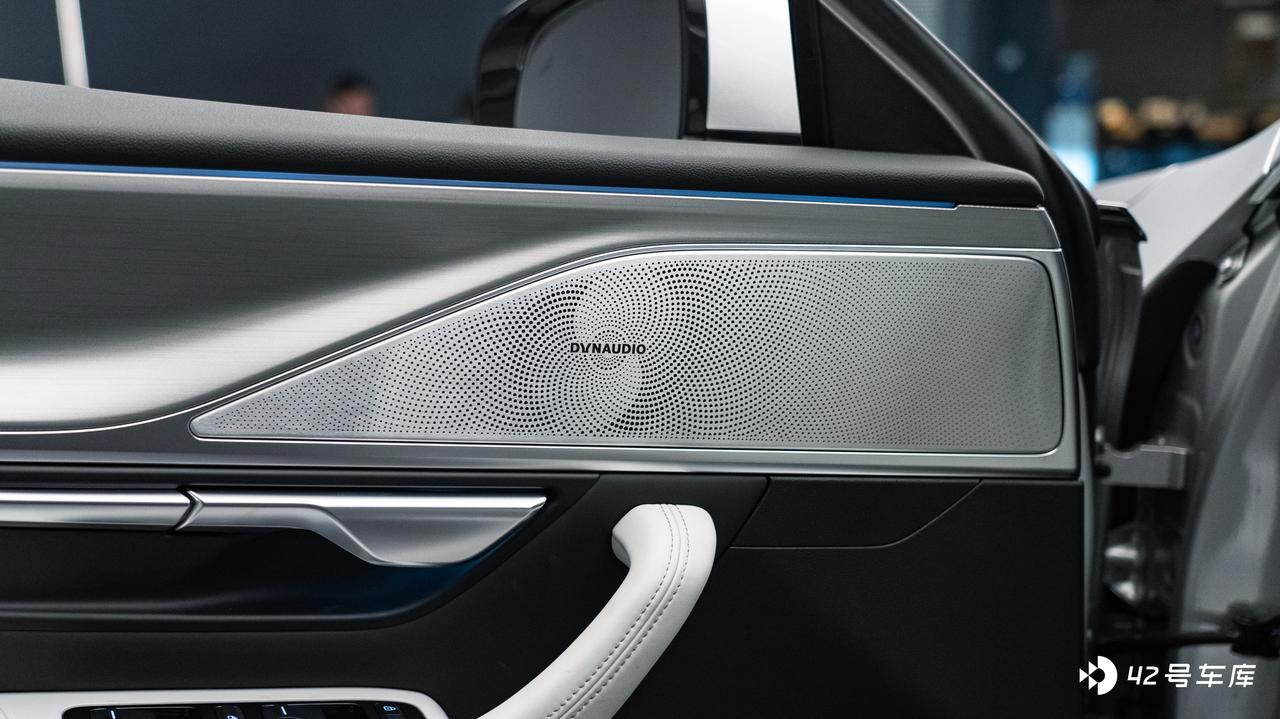
Some minor adjustments have been made to the buttons in the central control area at the top, but unfortunately, there is still no eyeglass box, making it less convenient to store sunglasses than the G9.
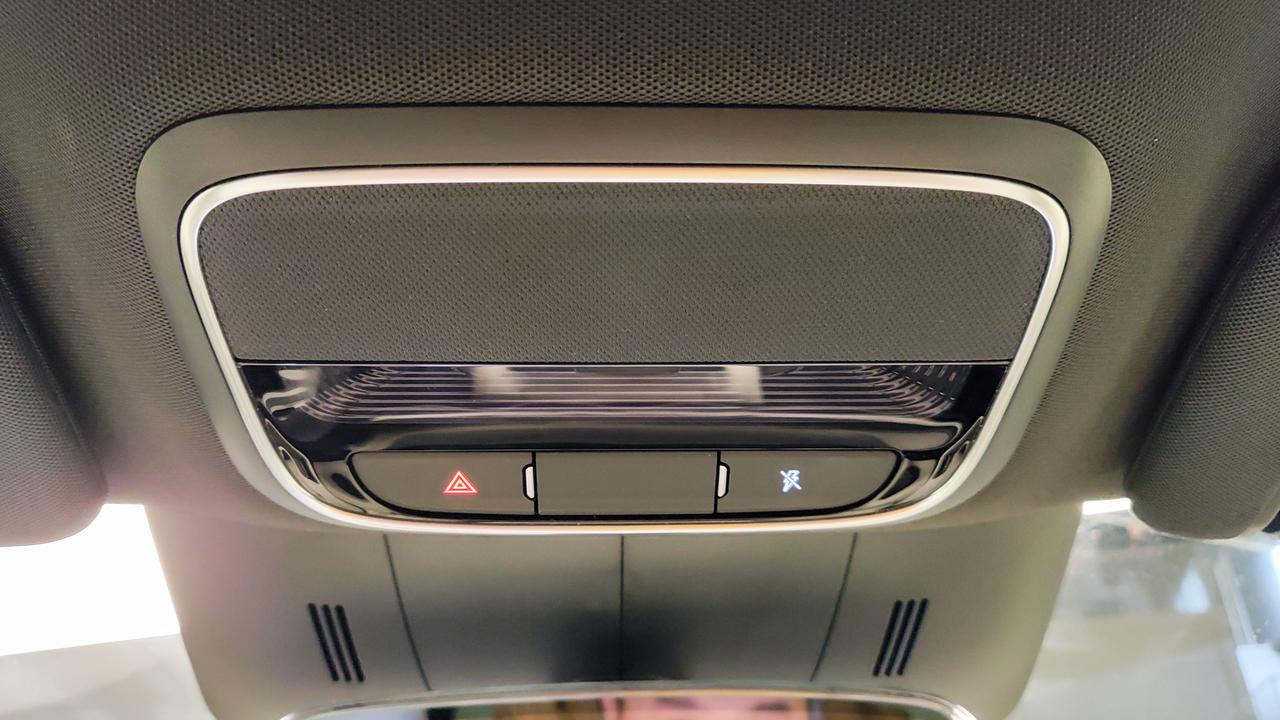
Moving to the back seat, the cushioning of the seats is softer compared to the previous model, including the middle seat, and you won’t feel particularly uncomfortable even after sitting for a while. In addition, the thickness and length of the seat cushion have increased to some extent, making it more and more like a large sofa.
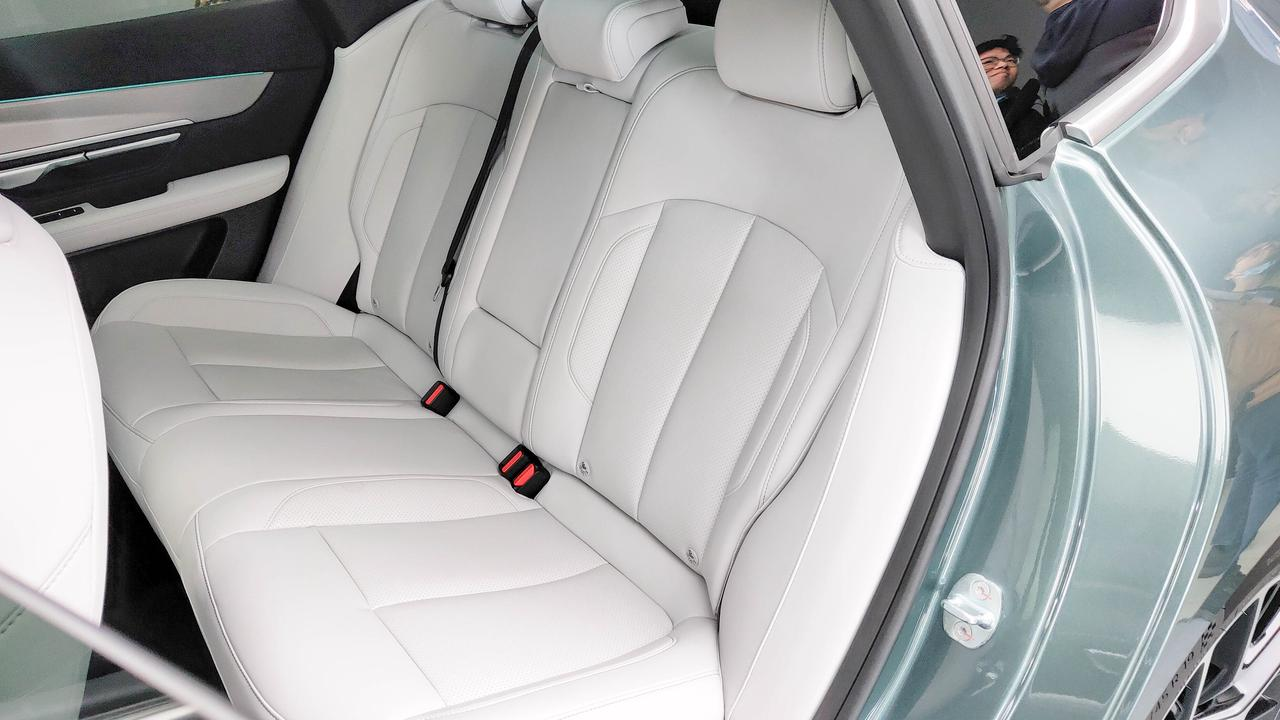
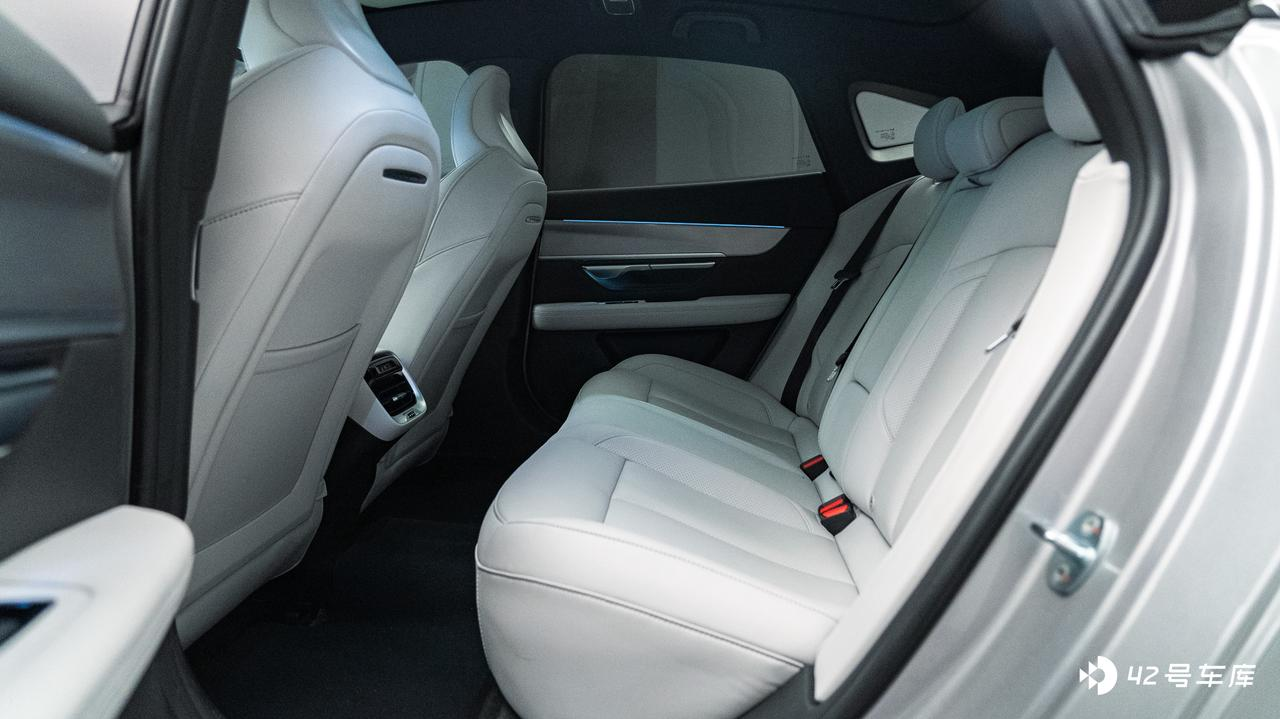
Regarding everyone’s concern about the space in the back seat, I asked our photographer colleague who is 175 cm tall and weighs 59 kg to act as a model. As we can see, the space has not changed much compared to the previous model, and it is still relatively cramped.
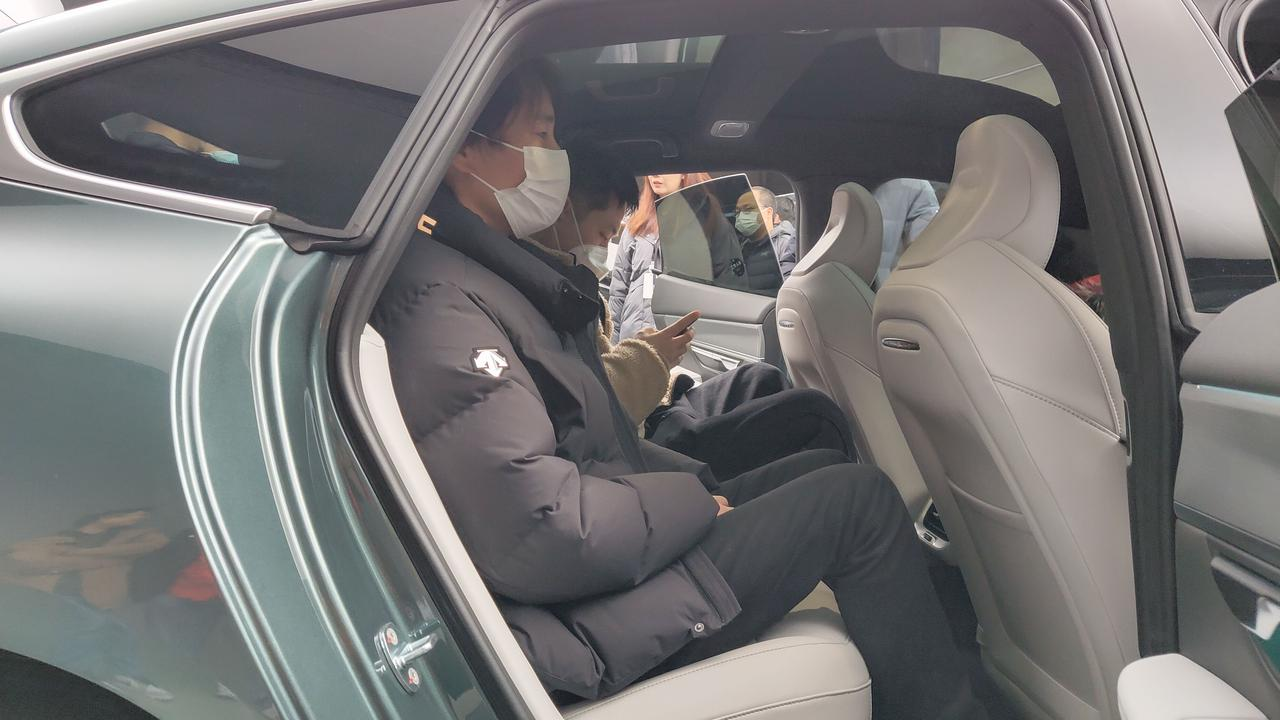
Although the length of the seat cushion has increased by 25mm, the backseat passengers still need to stretch their feet forward under the front seat to fully support the thighs. However, when the front seats are adjusted to the lowest position, their feet cannot reach, and they still need to raise the front seats a bit.
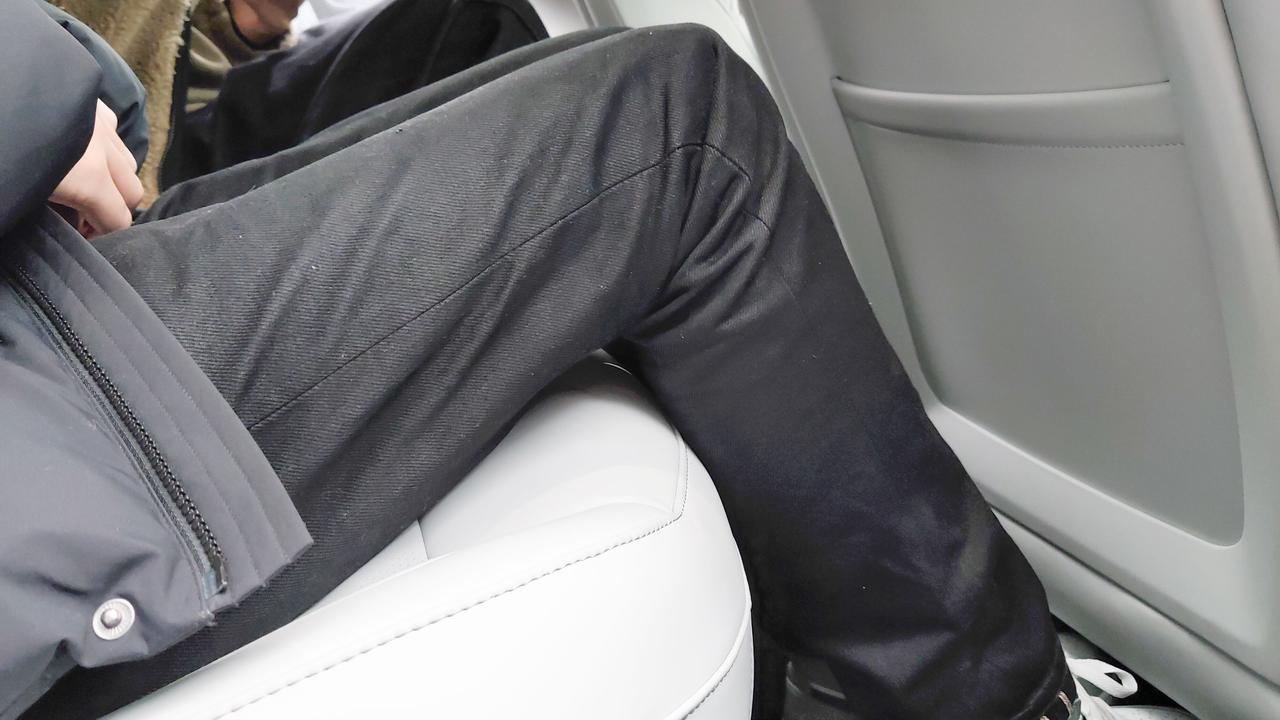
There have also been changes to the charging ports at the end of the central armrest in the back seat, with one low-power Type A port upgraded to a 60W Type C port, allowing backseat passengers to enjoy fast charging convenience.
 Translate the following Chinese Markdown text into English Markdown text in a professional manner, preserving the HTML tags inside Markdown and outputting only the results.
Translate the following Chinese Markdown text into English Markdown text in a professional manner, preserving the HTML tags inside Markdown and outputting only the results.
“The key of the P7i also uses the same style as the G9, which looks more advanced.

The changes in the interior design have been talked about so far, and overall, the P7i’s interior has added some luxury, comfort, and practicality to the previous simple style. The issues that were previously criticized by users have also been almost completely improved on the P7i. Although there are still some shortcomings, compared with the previous model, it can be said that it is a considerable improvement.
What other upgrades are there?
Here is an official upgrade list, which shows that there are still a lot of upgrades compared to the previous model.
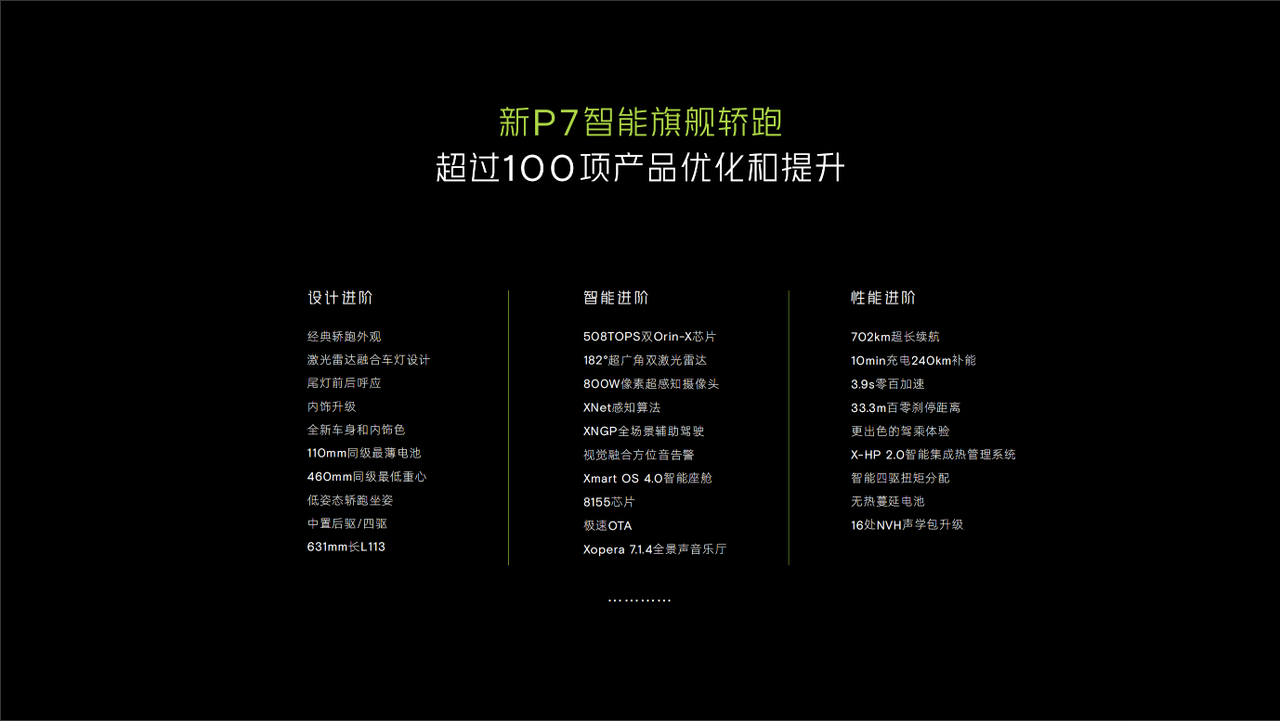
The newly added Interstellar Green appearance is probably an optional extra that needs to be paid for. Do you think this color looks good? And the elegant gray interior, which may be available as a free option like the current interior.

XPeng’s battery thickness has always been one of the thinnest in the industry. Currently, XPeng has also switched from purchasing battery packs directly from suppliers to only purchasing battery cells and assembling battery packs themselves. The P7i does not have an increased battery thickness, but increases the battery capacity from the original 81 kWh to 86 kWh under the same thickness of 110mm, which theoretically can achieve longer endurance.

The G9’s endurance capability is believed to be very powerful. This not only benefits from the 800V voltage platform but also represents a huge improvement in XPeng’s three-electricity capabilities compared to the previous generation model. Although the P7i still uses a 400V platform, the stronger three-electricity and larger battery also makes me look forward to its actual endurance. We will have the opportunity to test it within the 42Test system later.”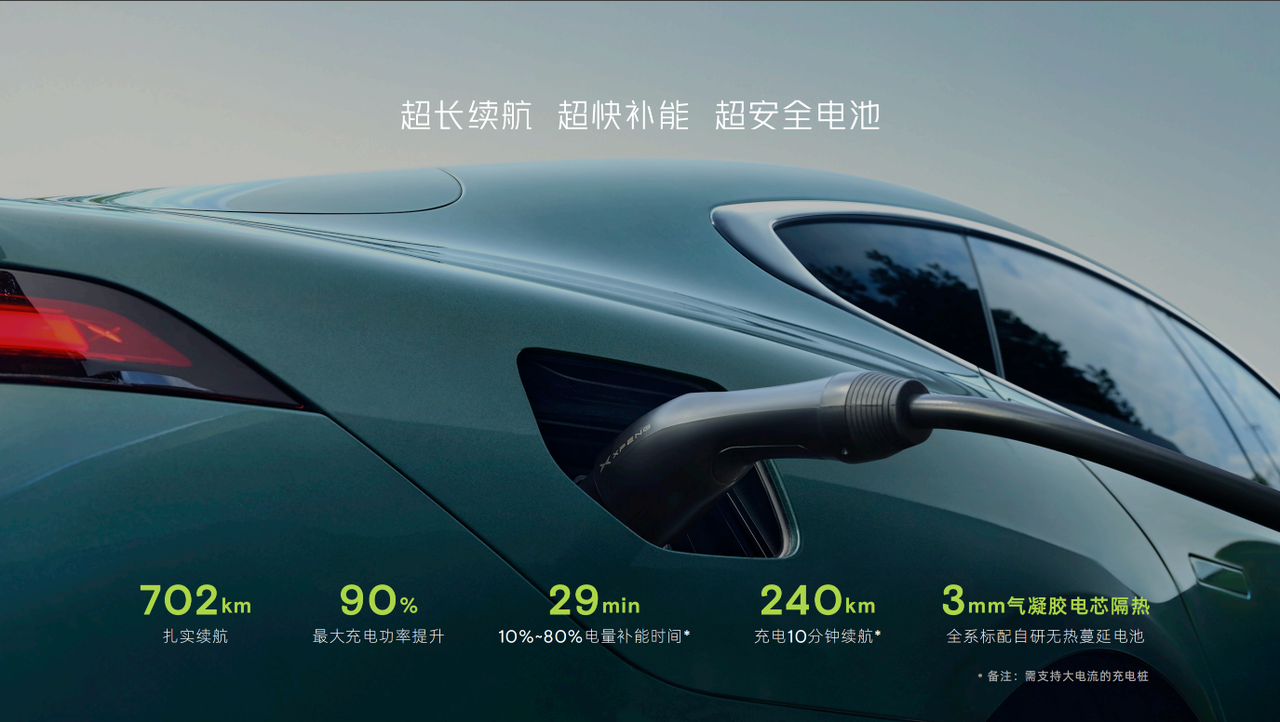
P7i adopts the same high current charging scheme as Tesla this time. The official said that the maximum charging power has increased by 90% compared with the current P7. It only takes 29 minutes to charge from 10% to 80%. Although it is not as good as the 800V platform, the maximum charging power of 170 kW can still greatly improve fast charge replenishment efficiency.
In addition, the thermal management system of the entire vehicle has been upgraded this time. The heat pump air conditioning is standard in the entire series, which increases the winter range of the vehicle by 15%.
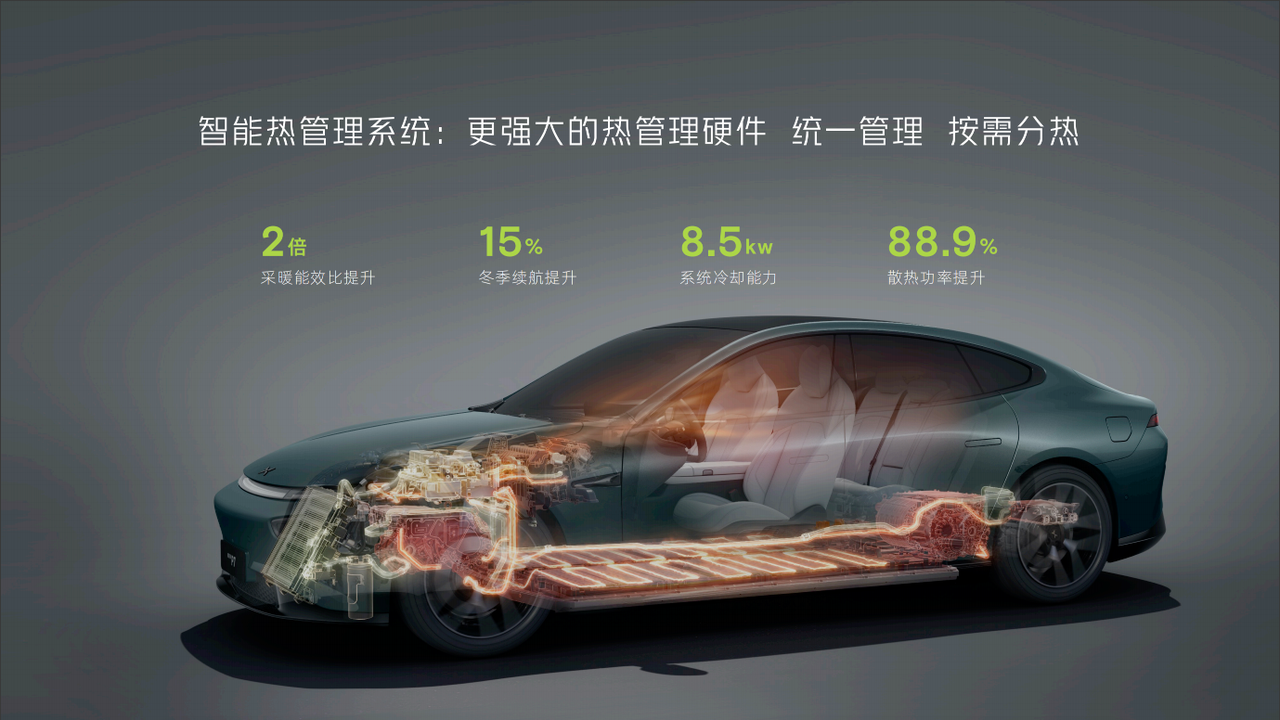
P7i also has changes in the mechanical quality of the vehicle, and the performance of the vehicle is stronger. Due to the increase in motor power, the 0-100 km/h acceleration of the rear-wheel-drive version has been reduced from 6.7 seconds to 6.4 seconds, and the 0-100 km/h acceleration of the all-wheel-drive version has been reduced from 4.3 seconds to 3.9 seconds, joining the three-second club. The maximum speed has also been increased from 170 km/h to 200 km/h, and the braking distance of 100 km/h has also been reduced to 33.3 meters.
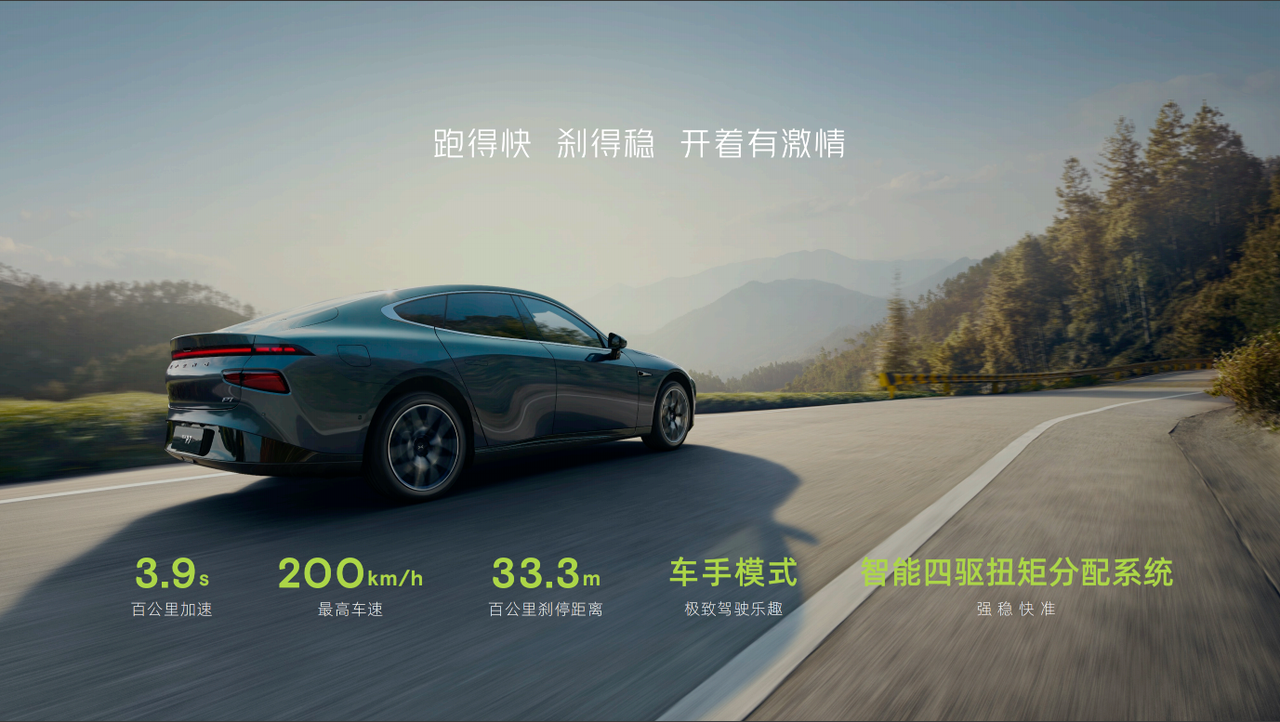
The intelligent four-wheel-drive torque distribution system of the all-wheel-drive version will use pure rear-wheel-drive mode in daily driving. The front motor will only intervene when changing lanes or accelerating at a high speed. When encountering road surfaces such as rain, snow, and mud, the vehicle will intelligently distribute suitable torque to ensure safe passage. The all-wheel-drive version also comes standard with CDC shock absorbers, which should improve the situation where the previous P7 cannot cope with consecutive large fluctuations in road surfaces.
In addition, the all-wheel-drive version also adds a “driver mode” similar to Tesla’s “track mode”. In this mode, the driver is allowed to freely change the vehicle settings to meet the needs of aggressive driving. However, the performance of driving P7i still needs to wait for the next dynamic test drive to be revealed.
Same-priced competitor? There are really many.
If we turn back time to the second half of 2020 and the first half of 2021, if you wanted to buy a pure electric car that combined long battery life and intelligent features, and kept the price under 300,000 yuan, then the only choice was the XPeng P7. However, times have changed, and today in 2023, there are many more options available in this price range.
Considering that the current price of the XPeng P7 is between 209,900 yuan and 249,900 yuan, and that the P7i will reportedly be available in four versions – rear-wheel drive, four-wheel drive, Pro and Max – I boldly speculate that the price of the P7i is likely to be around 270,000 yuan to 330,000 yuan, similar to the older version of the P7. With this in mind, I’ve found these competitors for the P7i – the Tesla Model 3, NIO ET5, Zeekr 001 and FF F7.
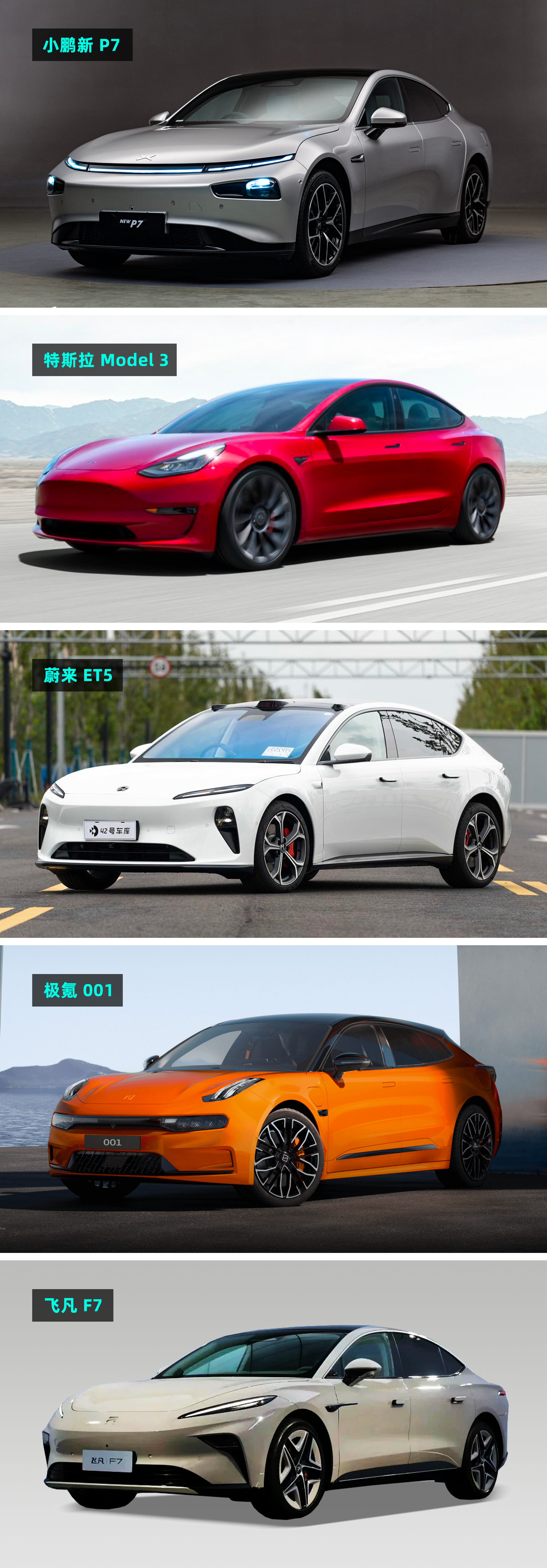
I’ve included images of the exterior and interior of these five cars here, and as you can see, each one has its own unique design. Feel free to leave a comment about your favorite car exterior and interior.
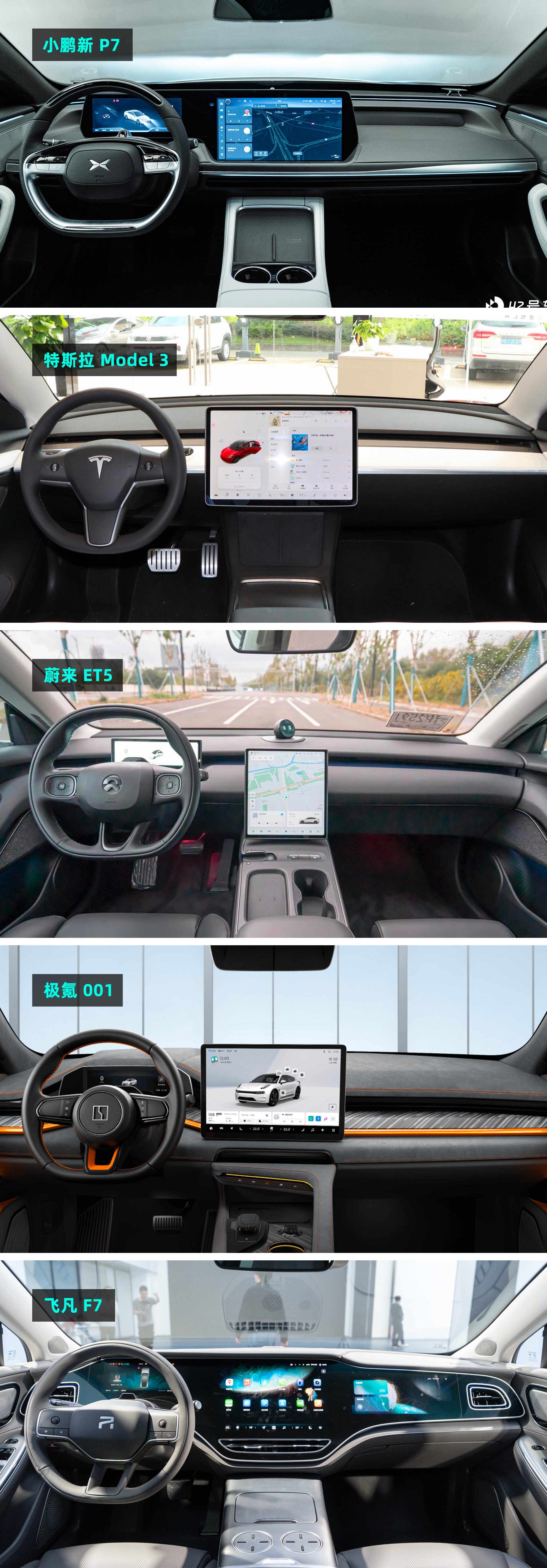
Comparing the performance and battery life of these five cars, we can see that all of them except the NIO ET5 have both rear- and all-wheel drive versions available. In terms of performance, they are all very competitive, with the four-wheel drive versions able to accelerate to 100 km/h in less than 4 seconds. We have tested the NIO ET5 ourselves here at 42Test, and it can accelerate to 100 km/h in just 3.7 seconds. For more information, please see our detailed article on the ET5, NIO ET5 – Our Detailed 8,000-Word Review|42Test.
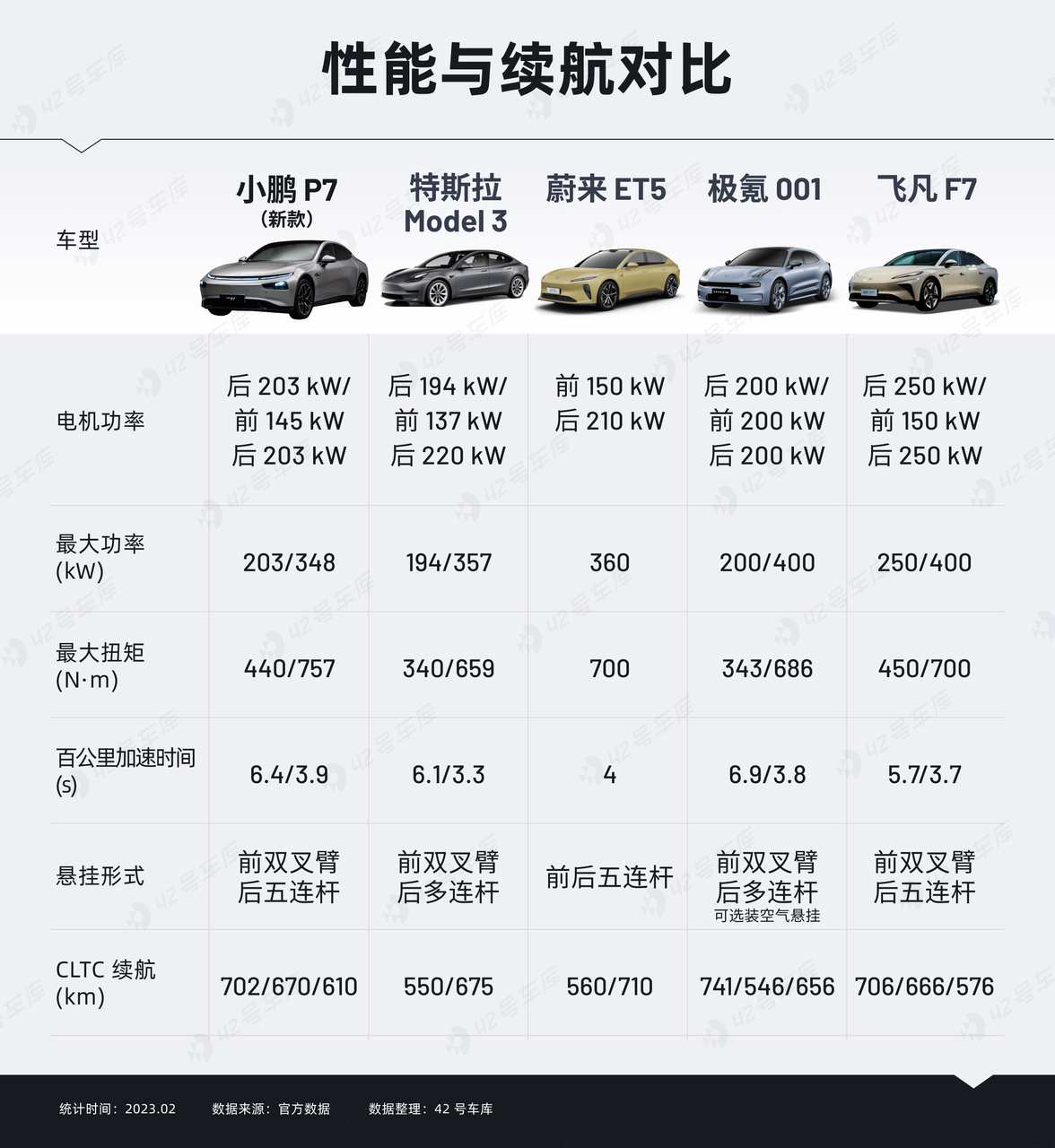 In terms of endurance, the CLTC endurance of the P7i 18-inch rear-wheel drive version can reach 702 km, while the 19-inch wheel version can also reach 670 km. Even the four-wheel drive version has a range of 610 km, which is not inferior to other competitors.
In terms of endurance, the CLTC endurance of the P7i 18-inch rear-wheel drive version can reach 702 km, while the 19-inch wheel version can also reach 670 km. Even the four-wheel drive version has a range of 610 km, which is not inferior to other competitors.
In terms of interior screens, except for Tesla, other models all adopt a dual-screen design of instrument cluster + central control. The P7i did not carry HUD this time, which is a small regret. Among the five models, only the ECARX 001 is equipped with HUD. Except for Tesla, four domestic models have all adopted the Qualcomm Snapdragon 8155 chip, and the fluency of the car system is excellent.
Regarding the comfort settings inside the car, the P7i comes standard with seat heating for both the front and rear rows, seat ventilation for the front row, and heated steering wheel, which has some advantages compared to several competing products that require optional comfort settings. Among the five models, the Model 3 only has seat heating for the front and rear rows, ECARX 001 comes with front seat massage, and the seat configuration of the FEIFAN F7 is the most luxurious.
Regarding the sound system, the P7i’s Dynaudio sound system includes 18 in-car speakers and 2 external speakers, and also supports 7.1.4 channel Dolby panoramic sound, with a sound power of 860 W. Looking at the parameters, the NIO ET5 and FEIFAN F7 can compete with it, but P7i’s Dynaudio sound system may not be standard and may need to be selected and installed like the old model.
Regarding the hardware of advanced driving assistance, the new P7 Max version will be equipped with the same XPILOT 4.0 hardware as the G9 Max version, including 2 lidars, 12 cameras (including 2 800W pixel forward-facing cameras), 5 millimeter-wave radars, and 12 ultrasonic radars. In terms of advanced driving assistance hardware, NIO ET5 and FEIFAN F7 can still compete with it. Although Tesla has strong basic driving assistance capabilities, there are many navigation and driving assistance issues, which perform poorly in our 42Mark scoring system.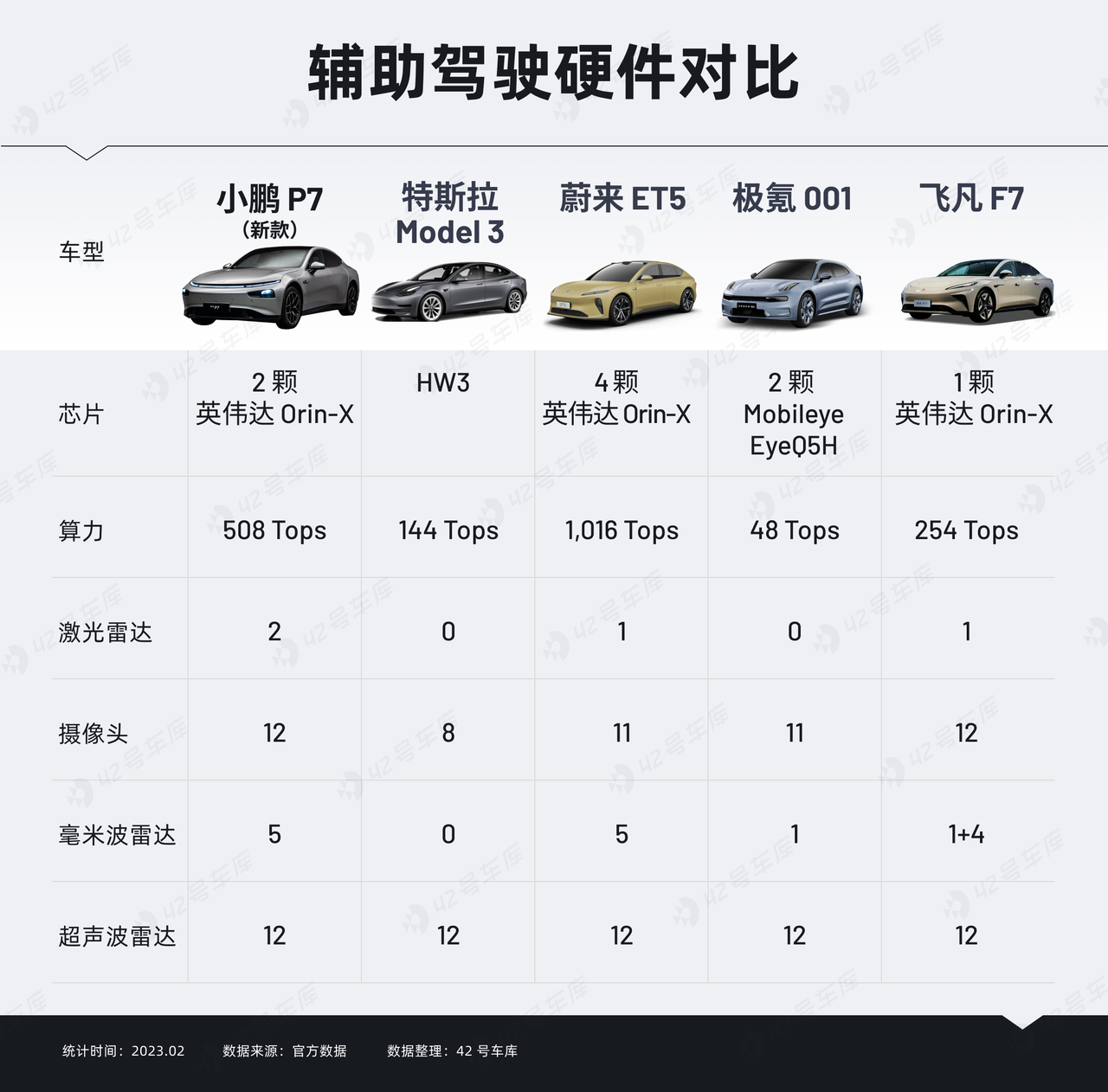
However, according to our testing at 42Mark, the actual navigation and assisted driving performance of the XPeng G9 Max version equipped with this hardware is not outstanding. Perhaps XPeng’s XPILOT 4.0 hardware system needs to wait until the official launch of XNGP in March this year to truly unleash its potential.
In summary, the P7i performs almost as well as its competitors in all aspects, but the dynamic driving performance of the vehicle is still unknown. In addition, the differences between the new and old versions of P7i are not significant, which may have some impact on users’ car purchases.
Conclusion
Before 2022, the P7 was one of the best pure electric sedans in the price range of 200,000 yuan. However, since last year, with more and more competitors entering the market, the competition pressure at the same price level has become increasingly intense. As a result, P7 launched dozens of models and introduced a standard lithium iron phosphate version to reduce the starting price to just over 200,000 yuan to maintain its monthly sales of around 5,000 units.
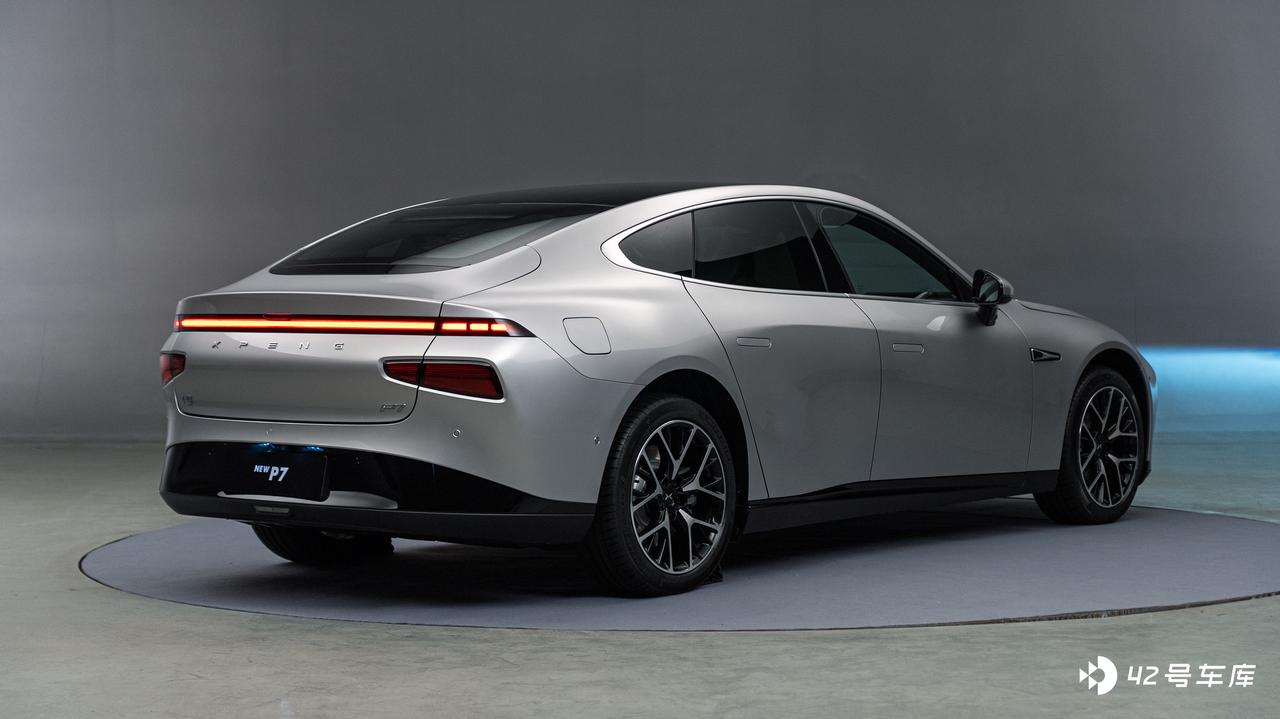
On February 3rd, the P7i was launched in Europe. I saw XPeng’s careful consideration of user feedback in it. The addition of a physical trunk switch, improved front and rear seats, and redesigned wireless charging pad are all improvements XPeng made after collecting feedback from countless users.
The addition of electric suction doors also makes the P7i one of the few models in the price range of 200,000 yuan with standard electric suction doors. In addition, the longer battery life and faster charging power of the improved three-electric system address the pain points of users using electric vehicles.
As an old owner of the P7, the P7i is undoubtedly very attractive to me. If its price is really the same as the top-end versions of the rear-wheel drive and four-wheel drive in 2020, it will still be an extremely cost-effective electric sedan. However, today in 2023, the P7i is no longer …The only choice is again.
This article is a translation by ChatGPT of a Chinese report from 42HOW. If you have any questions about it, please email bd@42how.com.
